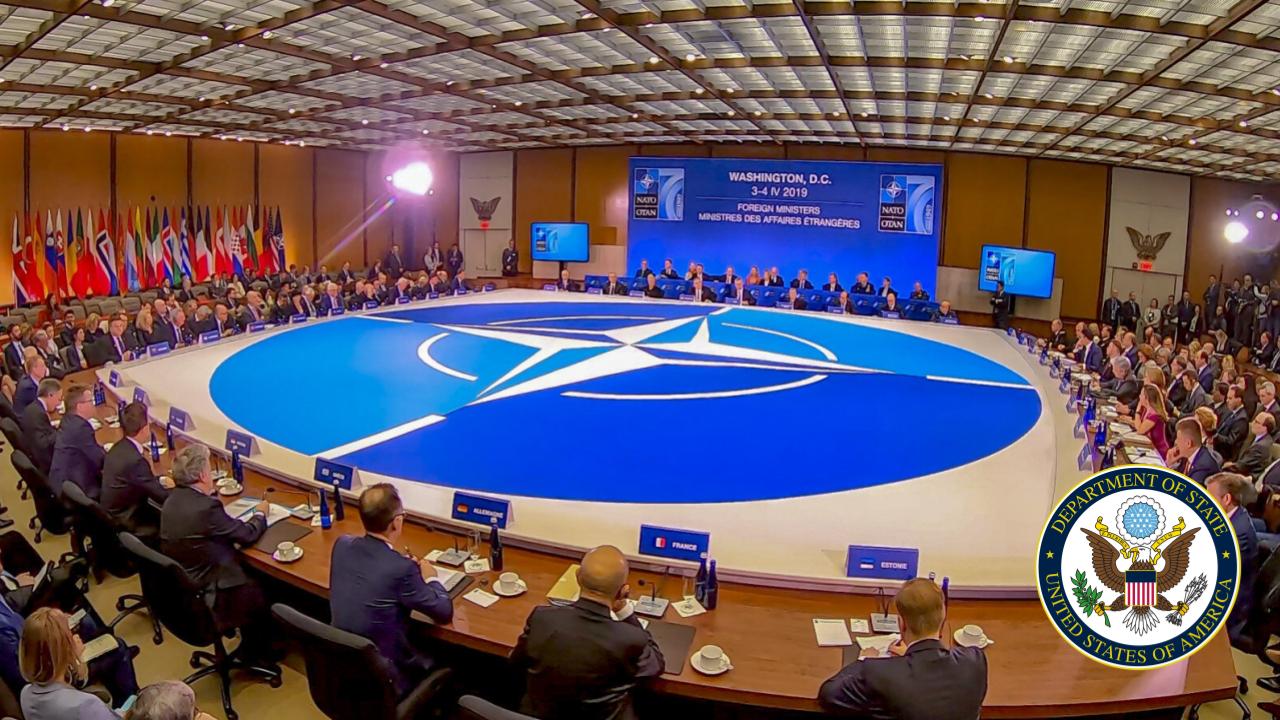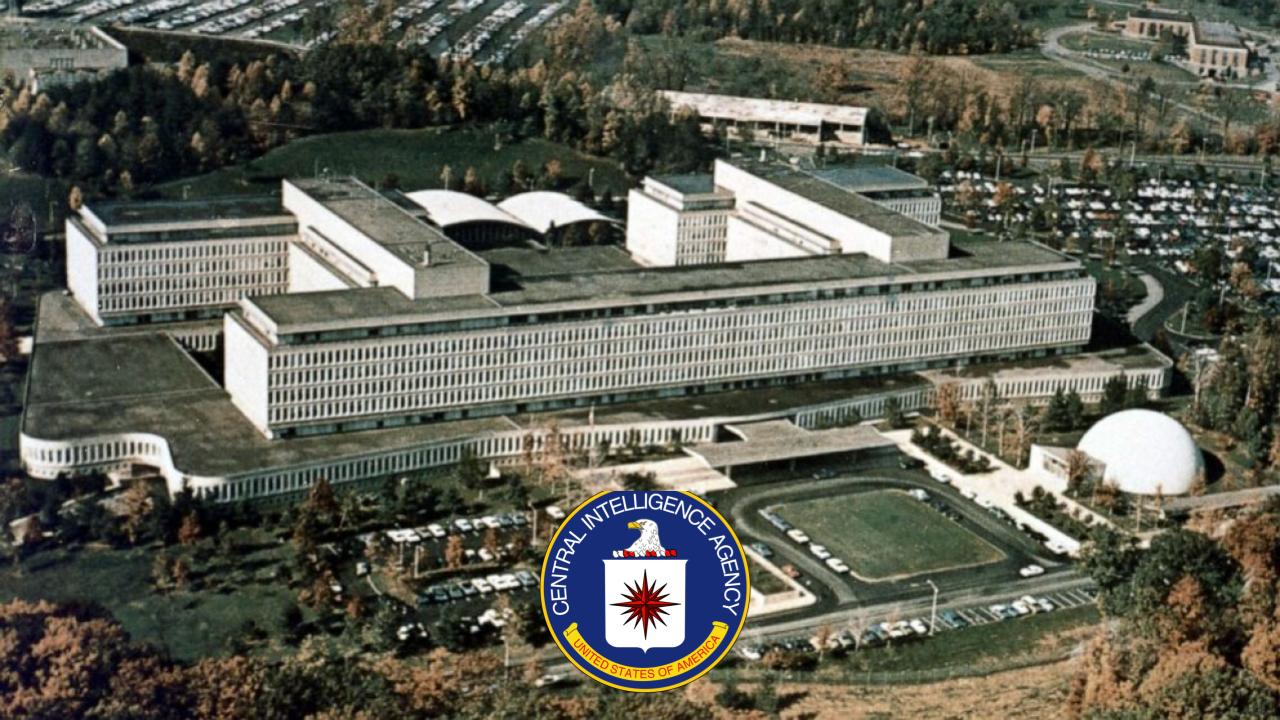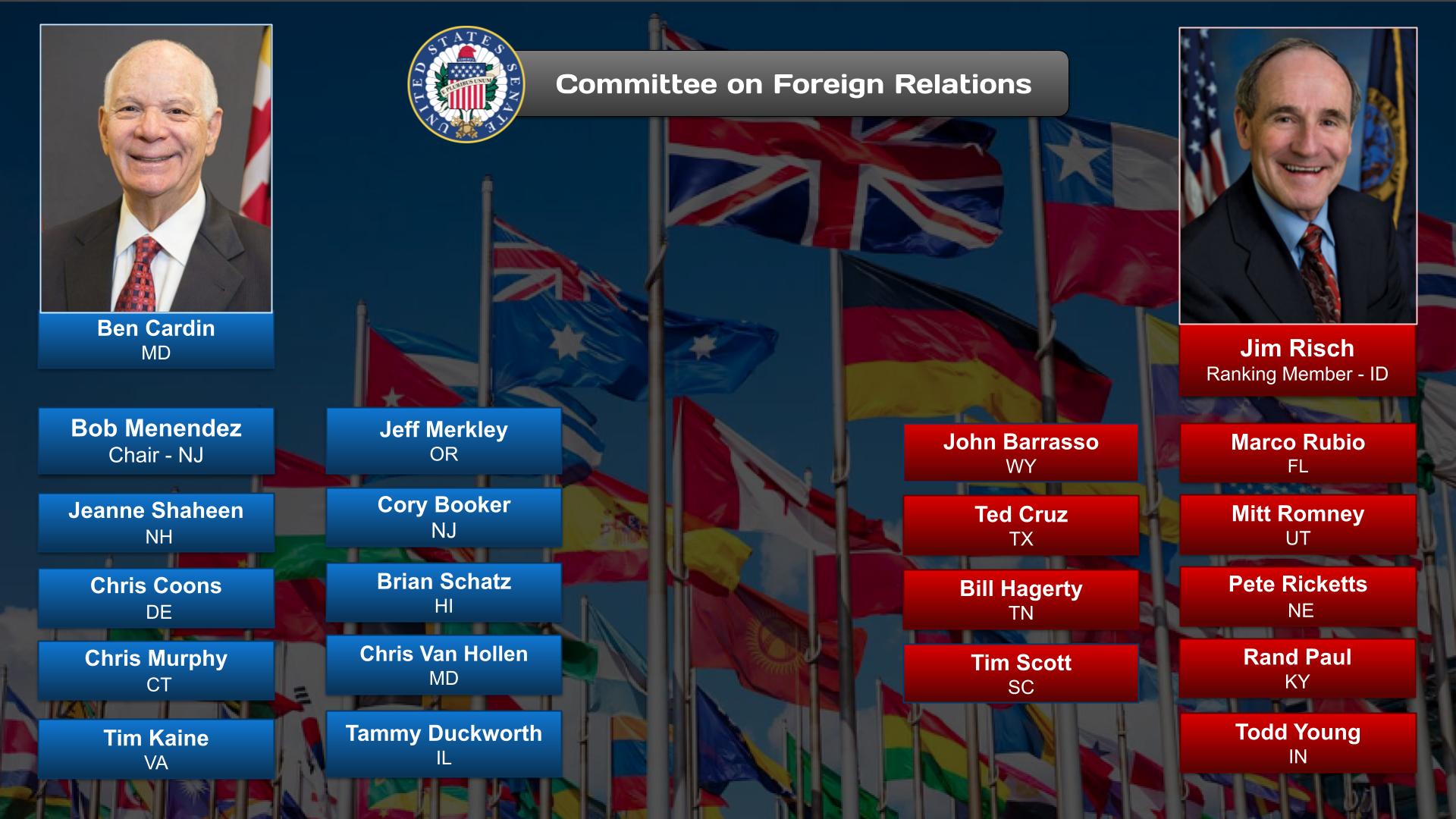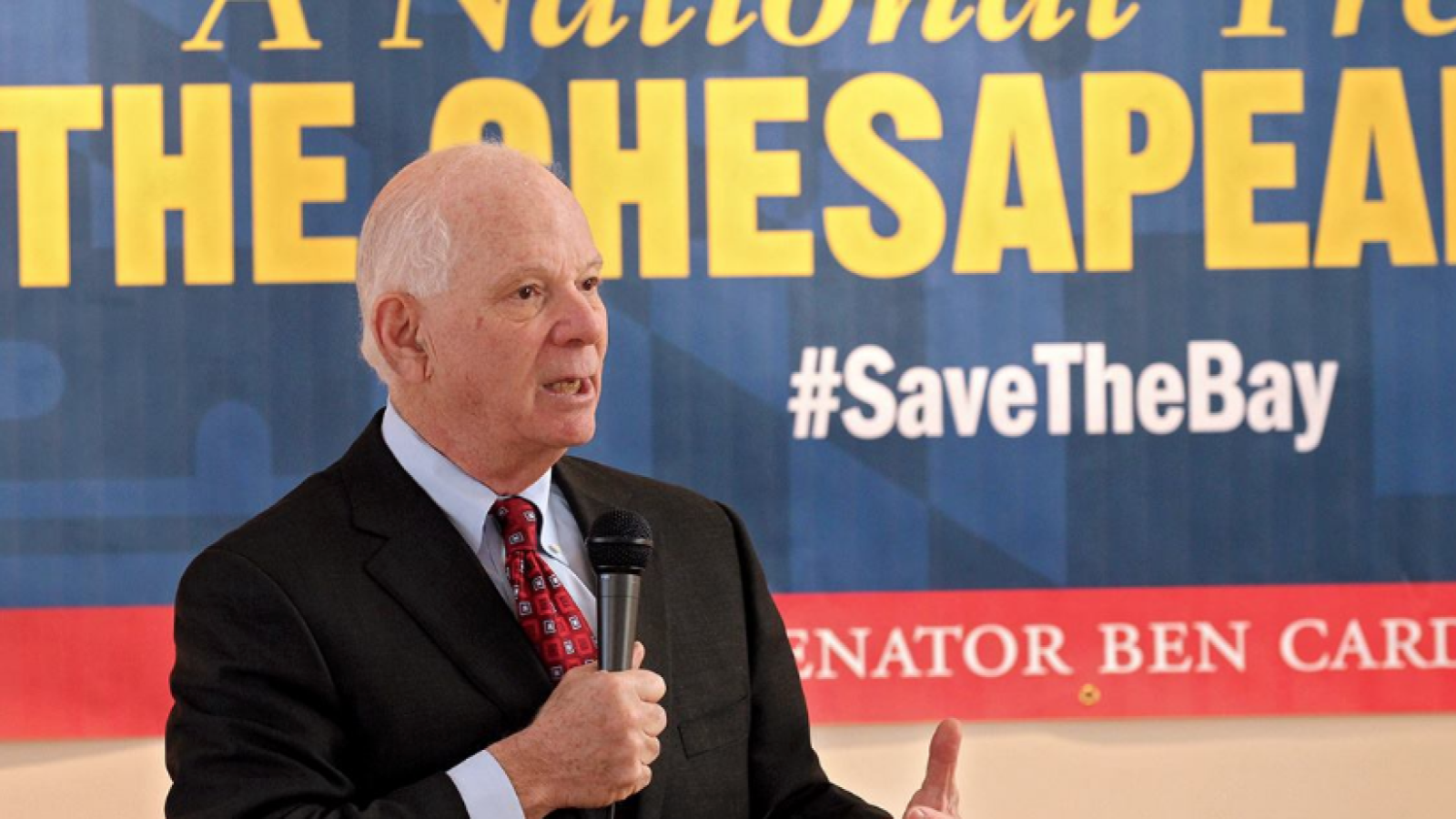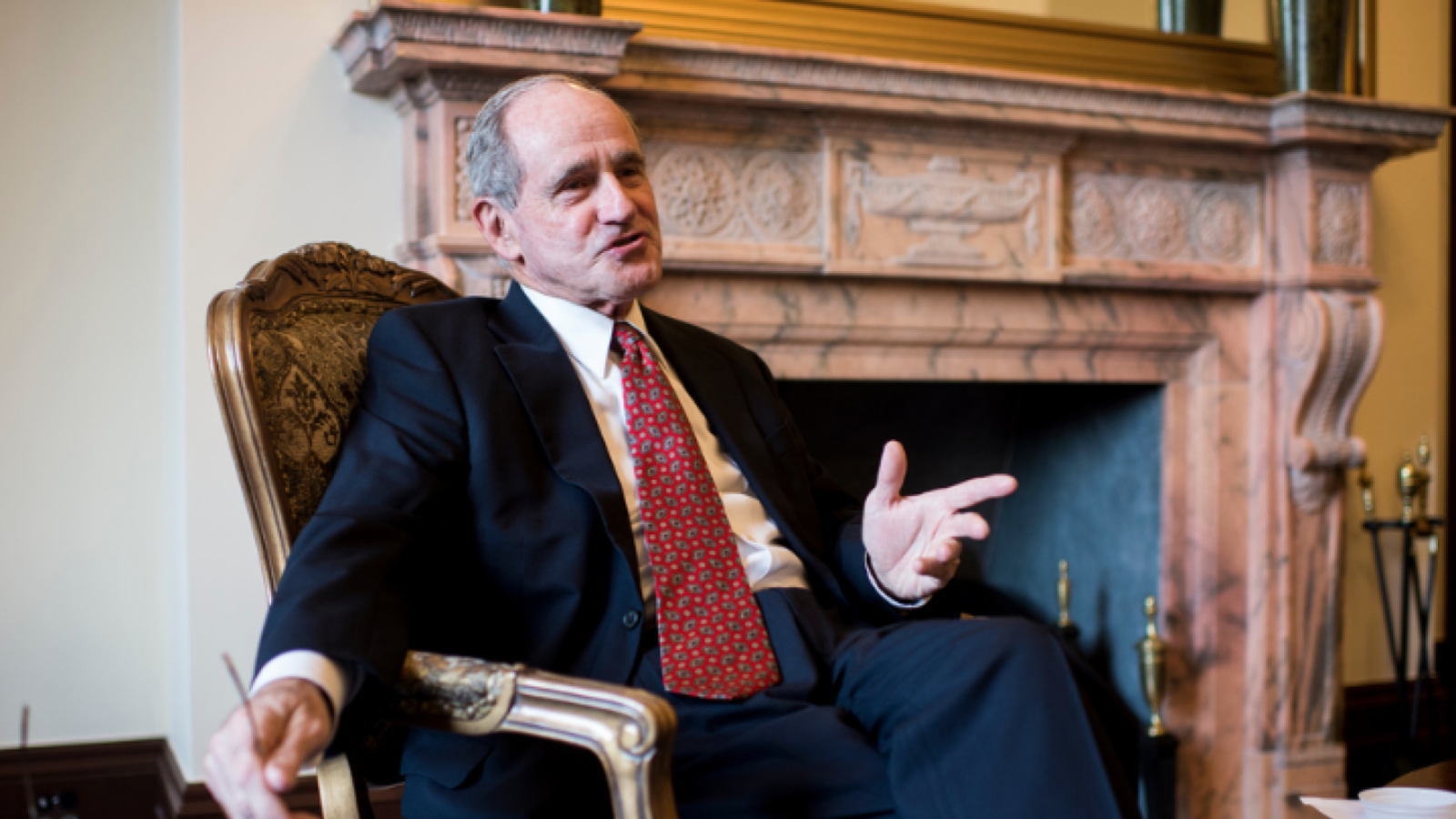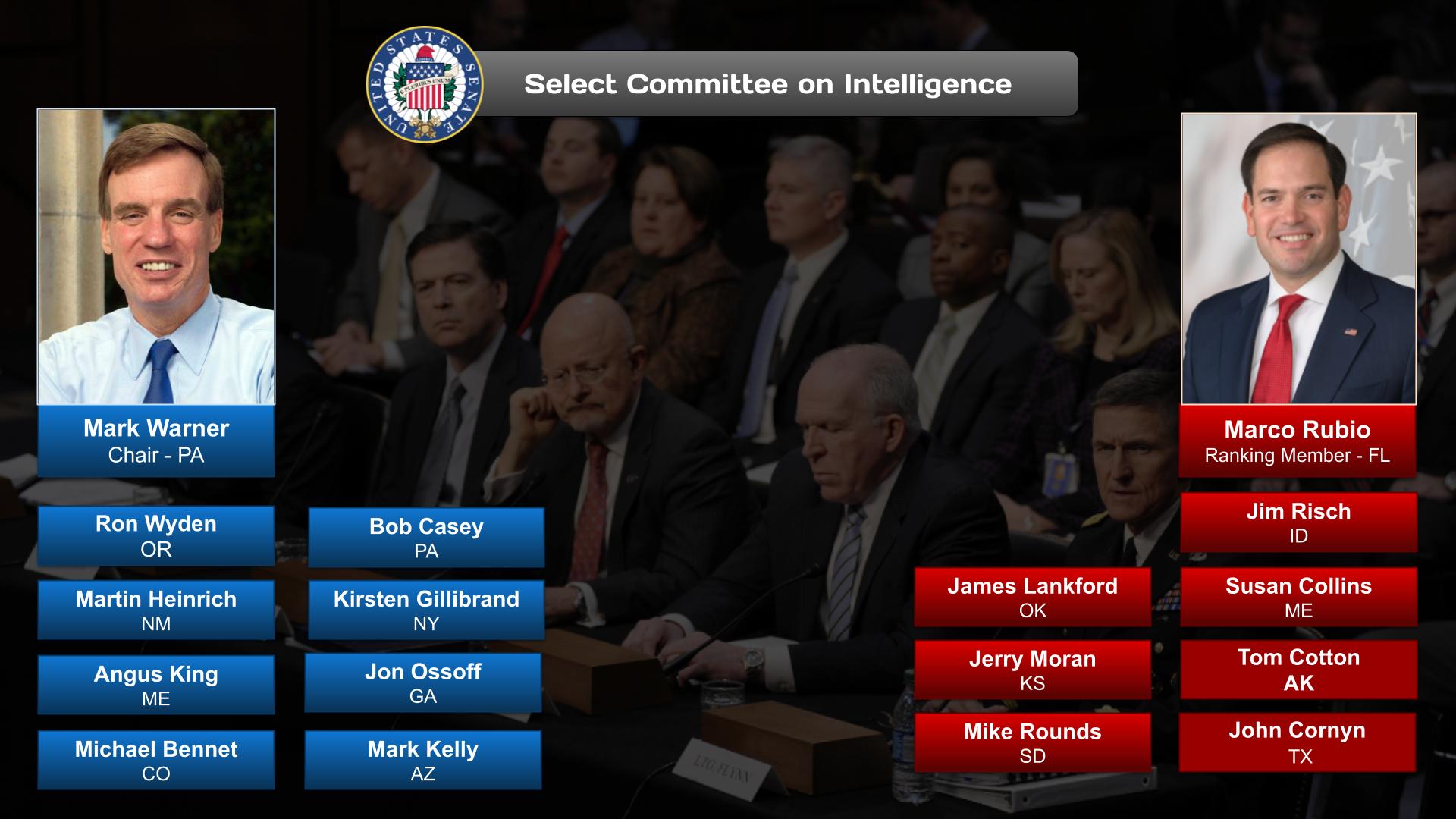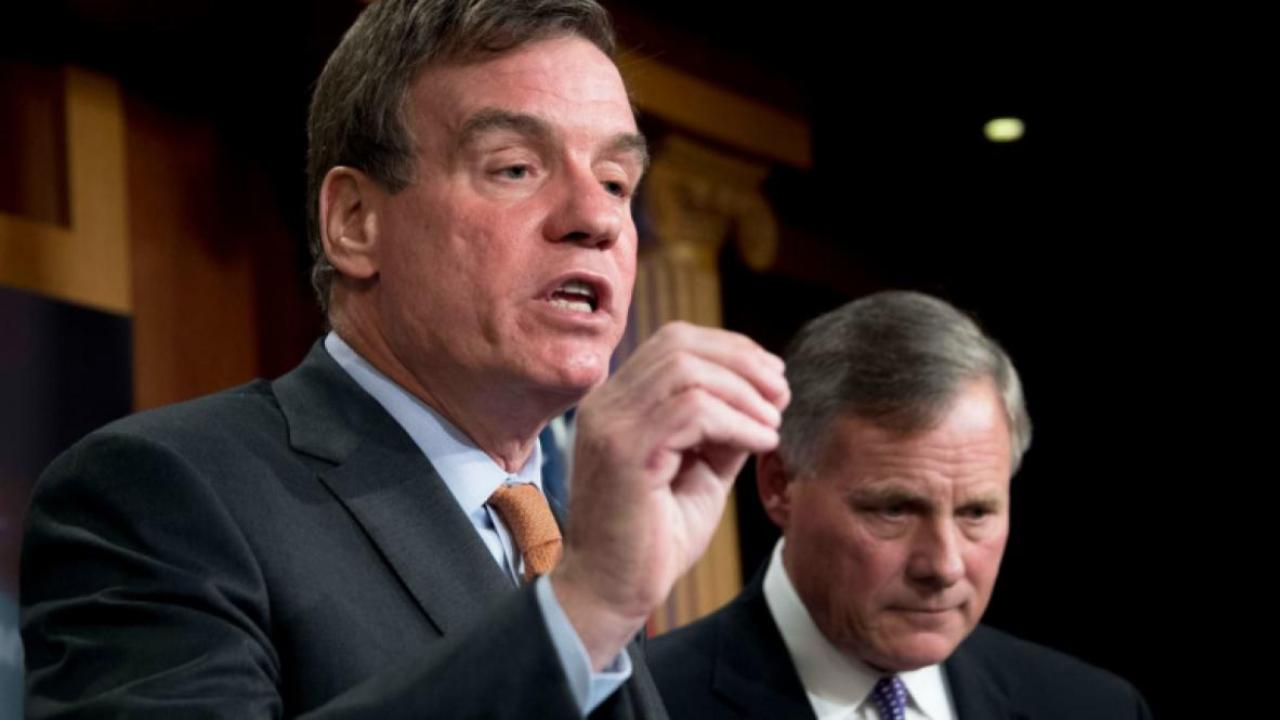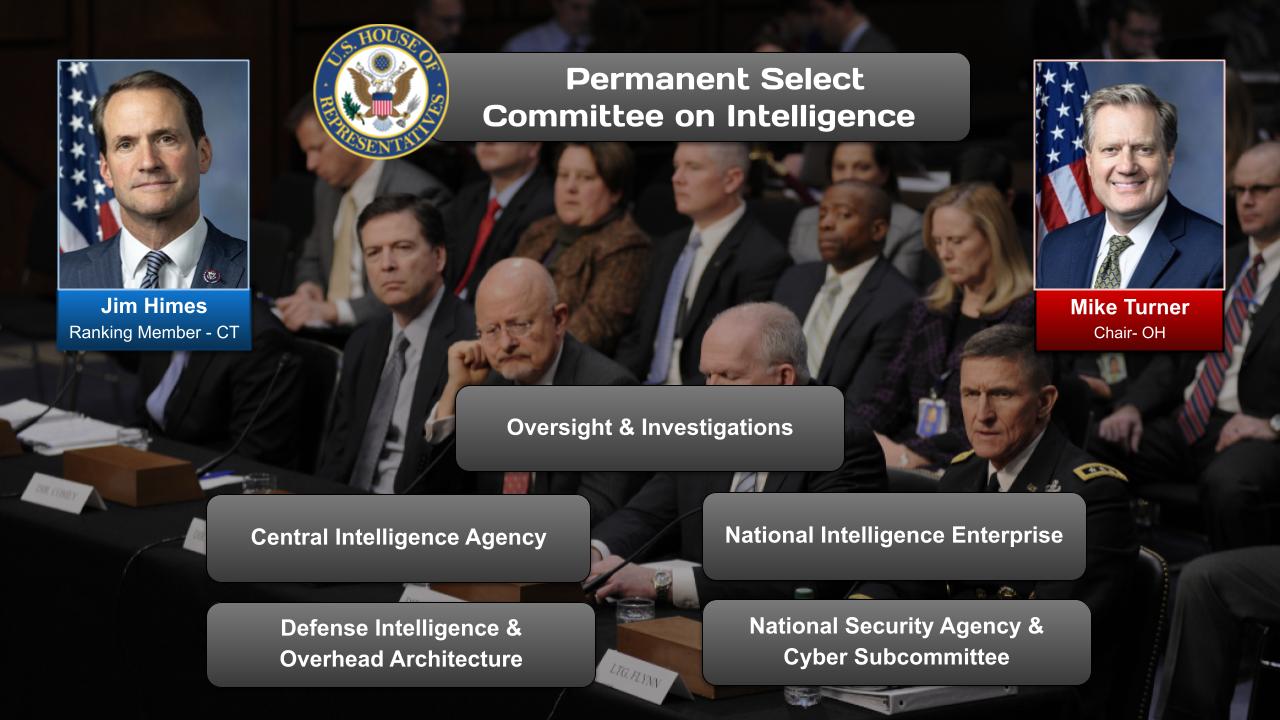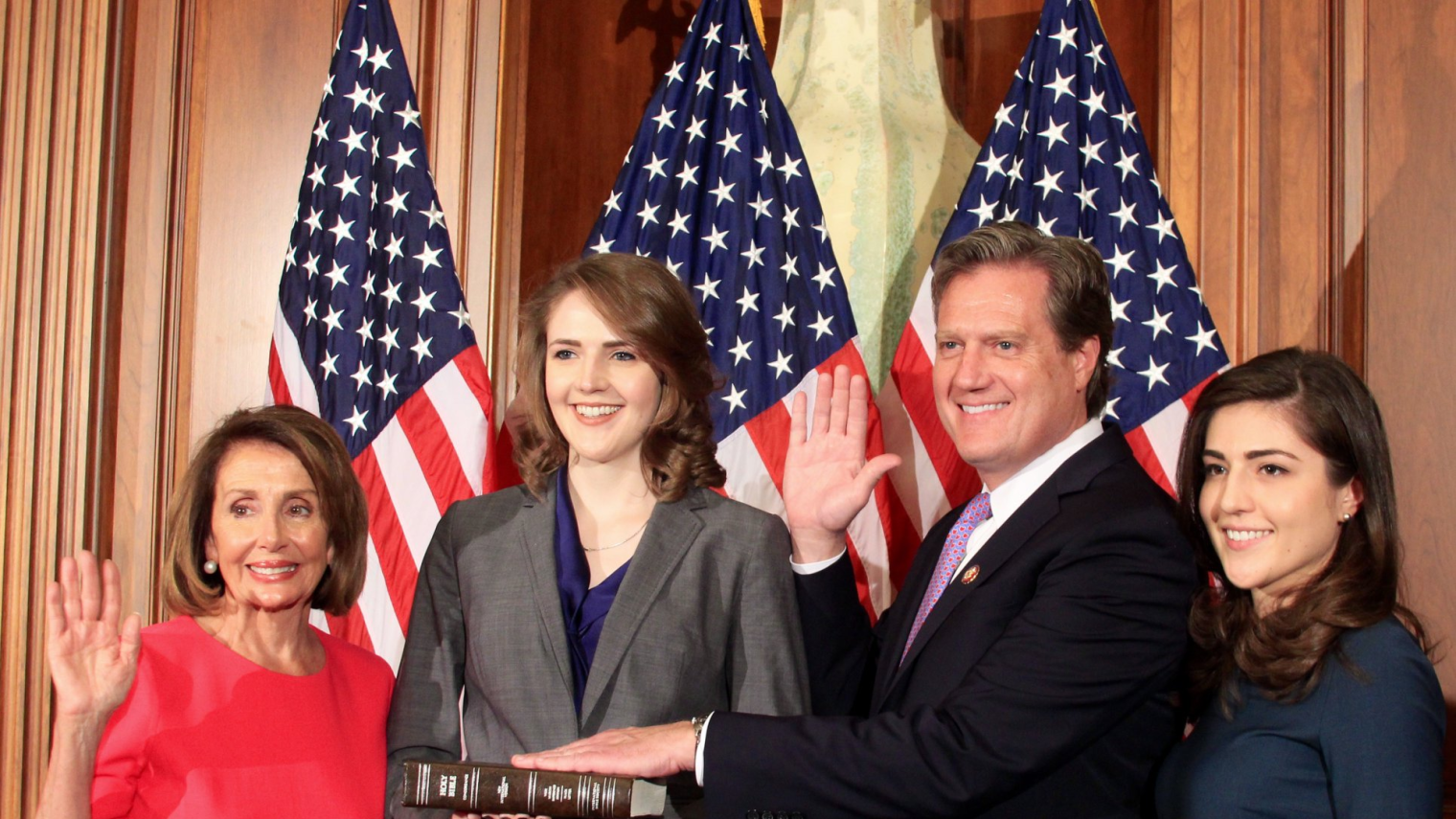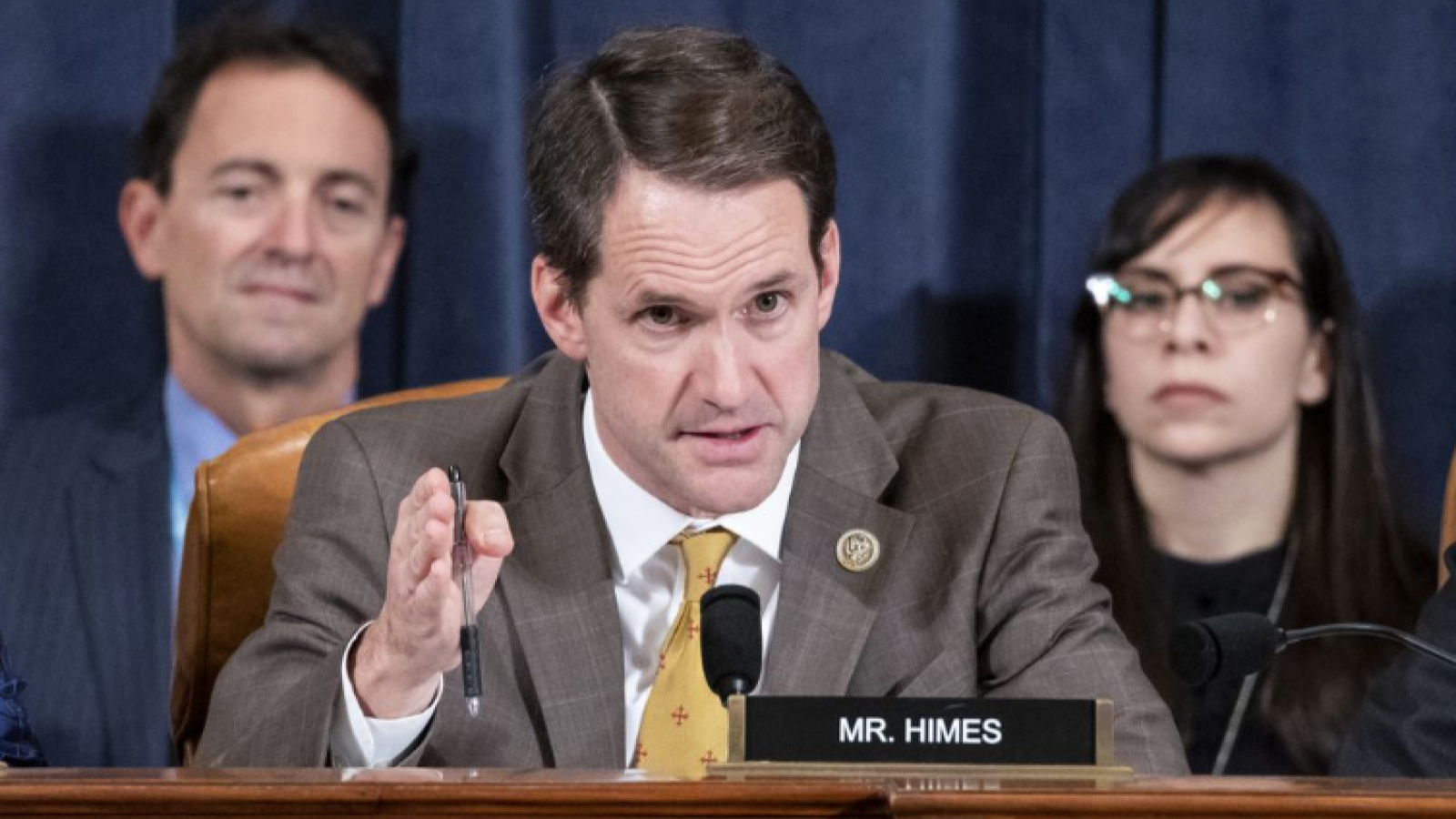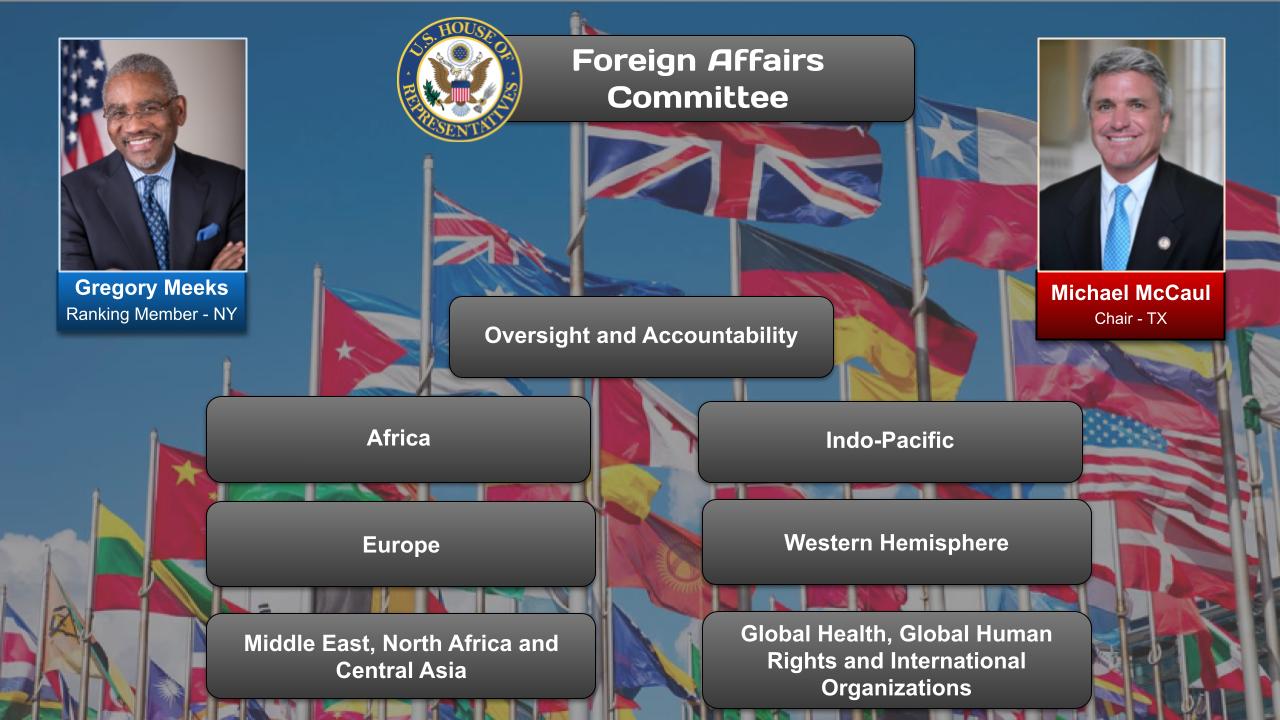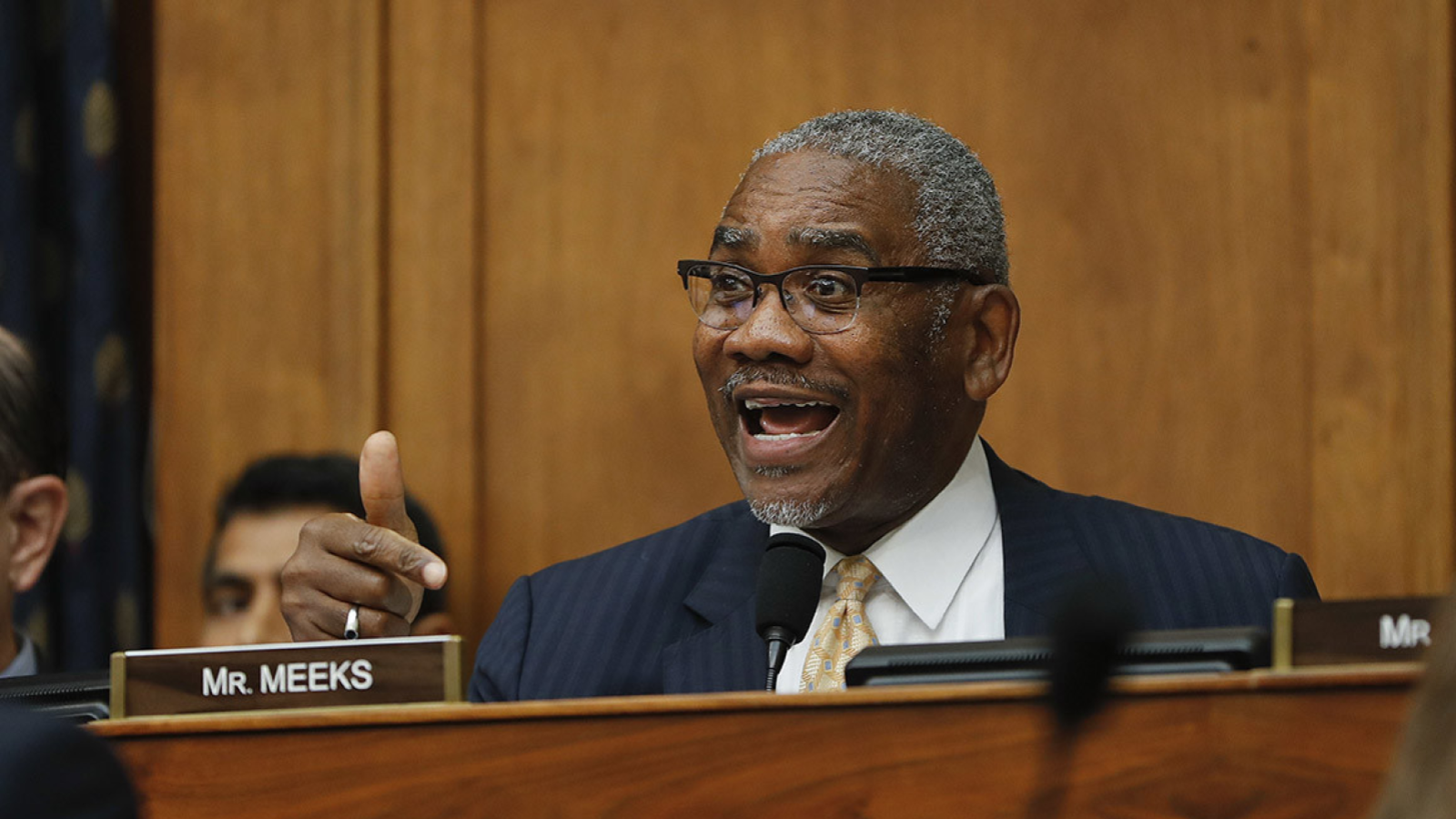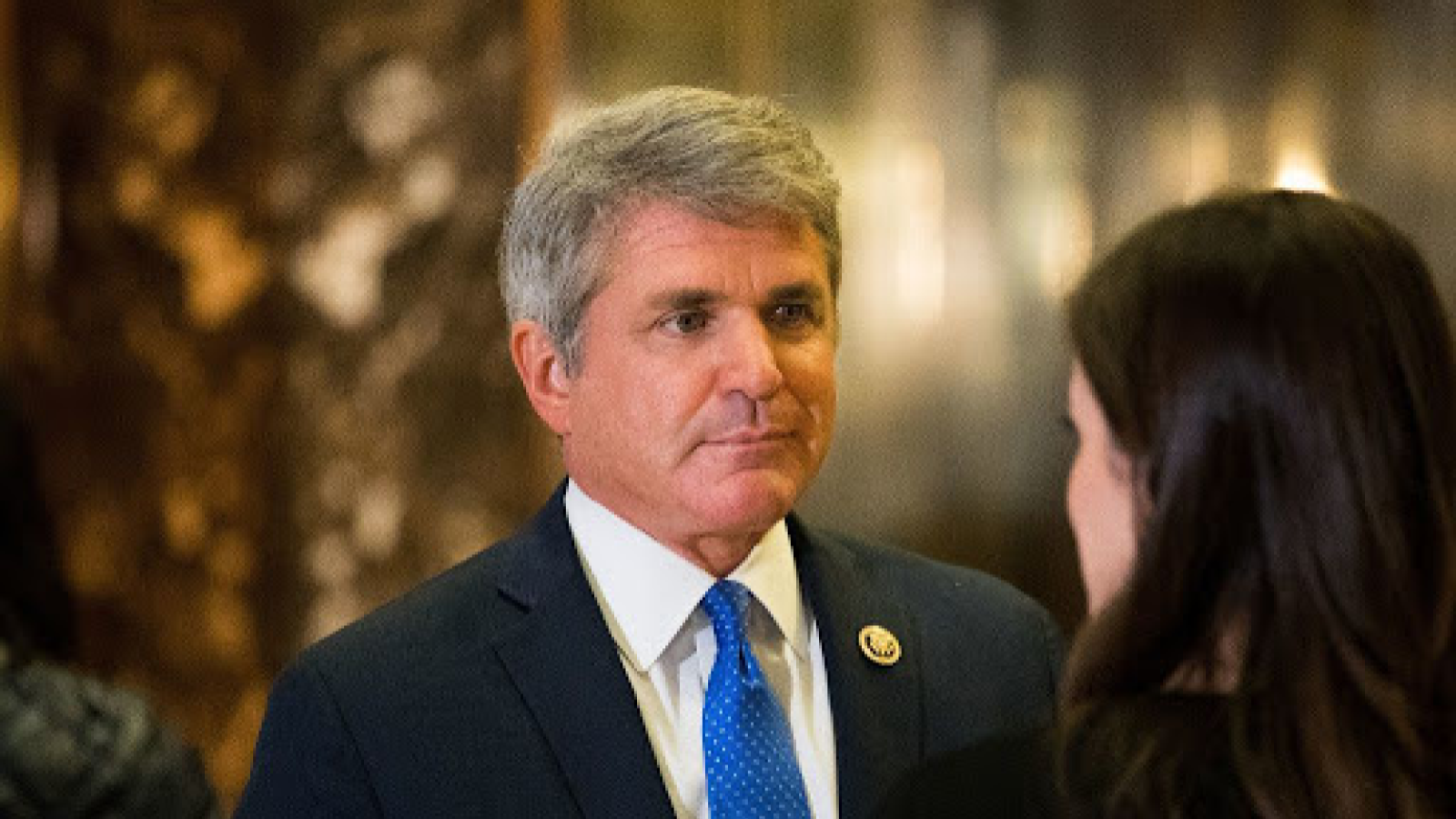Summary
This post on China is 1 of 3 issues that US onAir curators are focusing on in the Global Affairs category.
OnAir Post: China
News
PBS NewsHour – January 12, 2024 (06:23)
In Taiwan, voters head to the polls on Saturday for presidential and parliamentary elections. The results will be as closely watched in Beijing and Washington as they will be in Taipei. China considers Taiwan a breakaway republic, and President Xi Jinping often speaks of reunification with the island. Nick Schifrin looks at the candidates and the stakes for the vote.
About
Check the Global Affairs post for the party positions, committees, government agencies related to China issues.
Challenges
Geopolitical Rivalry:
- Competition for influence in the Asia-Pacific region
- Strategic competition over Taiwan, the South China Sea, and other maritime disputes
- Clash of values and ideologies between democratic and authoritarian systems
Economic Tensions:
- Trade imbalances and intellectual property disputes
- Huawei’s dominance in 5G technology and concerns about its security implications
- US-led sanctions and tariffs targeting Chinese companies
Technological Advancement:
- US-China rivalry in artificial intelligence (AI), semiconductors, and quantum computing
- Concerns about Chinese espionage and technology theft
- Competition for skilled workers and global dominance in innovation
Diplomatic Deadlocks:
- Deterioration in personal relationships between leaders
- Diplomatic protests and expulsions of diplomats
- Lack of progress in addressing key issues through bilateral negotiations
Human Rights Concerns:
- US condemnation of China’s treatment of Uyghur Muslims in Xinjiang
- US sanctions on Chinese officials involved in human rights abuses in Hong Kong
- Chinese accusations of US interference in its internal affairs
Other Challenges:
- Climate change mitigation and cooperation
- Non-proliferation of nuclear weapons
- Stability in the Middle East and the Korean Peninsula
- Arms control negotiations and military modernization
Source: Google Search + Gemini + onAir curation
Solutions
Economic Challenges
- Rebalancing the economy: Transition from export-led growth to domestic consumption and services.
- Reducing debt: Address growing debt levels in the corporate, household, and government sectors.
- Improving innovation and productivity: Foster a more innovative and knowledge-based economy.
- Resolving trade disputes: Manage trade conflicts with the US and other countries while pursuing fair trade practices.
Social Challenges
- Aging population: Address the challenges of an aging population and shrinking workforce.
- Income inequality: Reduce the wealth gap and promote social mobility.
- Environmental pollution: Improve air and water quality, and mitigate climate change.
- Urbanization and rural-urban divide: Balance economic growth in urban areas with development in rural areas.
Political Challenges
- Political reform: Gradual political reforms to enhance transparency, accountability, and citizen participation.
- Human rights: Address concerns about human rights and fundamental freedoms.
- Ethnic tensions: Promote harmony and address ethnic disparities in certain regions.
- Territorial disputes: Resolve territorial disputes with neighboring countries through peaceful means.
Other Challenges
- Technological disruption: Adapt to rapid technological advancements and mitigate potential economic and social impacts.
- Geopolitical tensions: Navigate complex international relations and maintain regional stability.
- Corruption: Implement anti-corruption measures at all levels of government and society.
- Sustainable development: Pursue economic growth while protecting the environment and preserving natural resources.
Key Solutions
- Government-led reforms: Implement comprehensive reforms in economic, social, political, and other areas to address these challenges.
- Market-oriented policies: Encourage private sector growth, innovation, and competition.
- International cooperation: Collaborate with other countries and international organizations to solve global challenges and promote stability.
- Investment in human capital: Enhance education, healthcare, and social welfare programs to improve human well-being.
- Education and social awareness: Promote public awareness and engagement in addressing social and environmental issues.
- Technological advancements: Utilize technology to improve efficiency, productivity, and sustainability.
- Rule of law and transparency: Strengthen the rule of law, promote transparency, and enhance public trust in institutions.
Source: Google Search + Gemini + onAir curation
Websites
Government Websites:
- Office of the U.S. Trade Representative (USTR): https://ustr.gov/issues/china
- U.S. Department of State, Bureau of East Asian and Pacific Affairs: https://www.state.gov/bureaus-offices/under-secretary-for-political-affairs/bureau-of-east-asian-and-pacific-affairs/
- U.S.-China Economic and Security Review Commission: https://www.uscc.gov/
Think Tanks and Research Institutions:
- Center for a New American Security (CNAS): https://www.cnas.org/research/china-nexus
- Council on Foreign Relations (CFR): https://www.cfr.org/topic/china
- RAND Corporation: https://www.rand.org/topics/china.html
- Stimson Center: https://www.stimson.org/topics/china
- Hoover Institution: https://www.hoover.org/search?utf8=%E2%9C%93&
Source: Google Search + Gemini + onAir curation
Legislation
Laws
Source: Google Search + Gemini + onAir curation
Taiwan Relations Act (1979)
- Establishes U.S. commitment to Taiwan’s security and its political and economic independence.
2. National Defense Authorization Act (NDAA) for Fiscal Year 2023
- Authorizes $858 billion for defense spending, including significant funding for countering China’s military expansion.
- Includes provisions to enhance U.S. military presence in the Indo-Pacific region.
3. CHIPS and Science Act (2022)
- Provides $52 billion to boost domestic semiconductor production to reduce U.S. reliance on China for critical technology.
4. Uyghur Forced Labor Prevention Act (2021)
- Bans the import of goods made with forced labor in the Xinjiang region of China.
5. Secure Equipment Act (2021)
- Restricts the sale of telecommunications equipment from certain Chinese companies deemed to pose a security risk.
6. Hong Kong Human Rights and Democracy Act (2019)
- Imposes sanctions on Chinese and Hong Kong officials responsible for human rights abuses in Hong Kong.
7. Countering America’s Adversaries Through Sanctions Act (CAATSA) (2017)
- Authorizes the President to impose sanctions on foreign entities engaging in “significant transactions” with Russian and Chinese defense or intelligence sectors.
8. Global Magnitsky Human Rights Accountability Act (2016)
- Authorizes the President to freeze assets and deny visas to foreign individuals responsible for human rights abuses, including those in China.
9. Export Control Reform Act (2018)
- Strengthens the U.S. government’s ability to control the export of sensitive technologies to China and other countries of concern.
10. 2018 National Defense Strategy
- Identifies China as a “strategic competitor” and outlines the need for the U.S. to enhance its military capabilities to address the challenges posed by China.
Bills Introduced 2023-2024
Source: Google Search + Gemini + onAir curation
Sampling of Bills:
H.R.839 — China Exchange Rate Transparency Act of 2023
Sponsor: Meuser, Daniel [Rep.-R-PA-9] (Introduced 02/06/2023)
Cosponsors: (6)
Committees: House – Financial Services | Senate – Foreign Relations
Committee Report: H. Rept. 118-291
Latest Action: Senate – 01/16/2024 Received in the Senate and Read twice and referred to the Committee on Foreign Relations. (All Actions)
H.R.22 —Protecting America’s Strategic Petroleum Reserve from China Act
Sponsor: McMorris Rodgers, Cathy [Rep.-R-WA-5] (Introduced 01/09/2023)
Cosponsors: (63)
Committees: House – Energy and Commerce
Latest Action: Senate – 01/25/2023 Read the second time. Placed on Senate Legislative Calendar under General Orders. Calendar No. 4. (All Actions)
H.R.803 —PROTECT Taiwan Act
Sponsor: Lucas, Frank D. [Rep.-R-OK-3] (Introduced 02/02/2023)
Cosponsors: (3)
Committees: House – Financial Services; Foreign Affairs | Senate – Foreign Relations
Committee Report: H. Rept. 118-286
Latest Action: Senate – 01/16/2024 Received in the Senate and Read twice and referred to the Committee on Foreign Relations. (All Actions)
H.R.2766 —Uyghur Policy Act of 2023
Sponsor: Kim, Young [Rep.-R-CA-40] (Introduced 04/20/2023)
Cosponsors: (106)
. Securing American Leadership in the 21st Century Act (S. 1169/H.R. 3525)
- Increases investment in critical technologies, research and development, and workforce development.
- Enhances economic cooperation with allies and partners to counter China’s economic influence.
- Strengthens military capabilities and alliances to deter Chinese aggression.
2. China Competition Act of 2023 (S. 1260)
- Establishes a national strategy to compete with China across multiple domains, including technology, economics, and security.
- Creates a new commission to monitor and coordinate government actions on China.
- Provides funding for research, development, and innovation to counter Chinese technological advances.
3. American COMPETES Act (H.R. 4521)
- Invests significantly in science, technology, engineering, and mathematics (STEM) education and research.
- Establishes a national strategy for quantum computing and artificial intelligence to compete with China’s technological advancements.
- Creates a new Office of Critical Technologies and Security within the Department of Commerce to oversee economic security issues related to China.
4. Taiwan Enhanced Resilience Act of 2023 (S. 1226/H.R. 3526)
- Authorizes increased military assistance to Taiwan to strengthen its self-defense capabilities.
- Encourages diplomatic recognition of Taiwan and promotes its participation in international organizations.
- Imposes sanctions on China for any aggression against Taiwan.
5.Uyghur Forced Labor Prevention Act (H.R. 6256)
- Prohibits the import of goods made with forced labor in China’s Xinjiang region.
- Requires the President to identify and sanction entities involved in forced labor practices.
- Aims to address human rights concerns and protect American businesses from complicity in labor abuses.
6. China Tariff Relief and Reform Act (H.R. 5121)
- Proposes reforms to the U.S.-China tariff system to alleviate economic pressures on American businesses and consumers.
- Calls for a phased reduction of tariffs on Chinese imports.
- Prioritizes the reduction of tariffs on goods not produced domestically in the United States.
7. Countering Chinese Influence and Malign Activities Act of 2023 (S. 3394)
- Addresses Chinese government efforts to influence American public opinion and policymaking.
- Requires disclosure of funding and relationships between Chinese entities and American institutions.
- Empowers law enforcement agencies to investigate and prosecute malign Chinese activities.
Note: This is not an exhaustive list, and the specific content of these bills may change as they progress through the legislative process.
Committees: House – Foreign Affairs | Senate – Foreign Relations
Latest Action: Senate – 02/26/2024 Received in the Senate and Read twice and referred to the Committee on Foreign Relations. (All Actions)
Committees, Agencies, & Programs
Committees
Source: Google Search + Gemini + onAir curation
- Committee on Armed Services: Oversees all matters related to the military and defense, including the United States’ relationship with China and its maritime and air capabilities.
- Committee on Foreign Affairs: Responsible for legislation and oversight of foreign policy, including relations with China, Taiwan, and other Asian nations.
- Committee on Intelligence: Oversees the activities of the intelligence community, including gathering and analyzing information on China’s military, political, and economic activities.
- Committee on Science, Space, and Technology: Monitors advancements in science and technology, including those that have implications for national security and the competition with China in key areas such as artificial intelligence and quantum computing.
- Select Committee on Economic Disparity and Fair Growth: Examines economic issues related to China, including trade, investment, and supply chain vulnerabilities.
Senate
- Committee on Armed Services: Similar to its House counterpart, oversees the military and defense, including relations with China.
- Committee on Foreign Relations: Responsible for legislation and oversight of foreign policy, including relations with China, Taiwan, and the broader Indo-Pacific region.
- Committee on Homeland Security and Governmental Affairs: Oversees matters related to homeland security, including potential threats from China’s cyber operations, economic espionage, and influence campaigns.
- Committee on Commerce, Science, and Transportation: Examines issues related to trade, technology, and infrastructure, including the implications of China’s rise in these areas.
- Select Committee on Intelligence: Similar to its House counterpart, oversees intelligence activities and gathers information on China.
Other Congressional Entities
- House China Task Force: A bipartisan group of representatives dedicated to addressing the challenges and opportunities presented by China’s rise.
- Senate China Study Group: A similar group of senators focused on developing long-term policy recommendations for dealing with China.
- Congressional-Executive Commission on China (CECC): A bipartisan body composed of members of Congress and the executive branch that monitors human rights and rule of law in China.
Government Agencies
Source: Google Search + Gemini + onAir curation
Executive Branch
- Department of State: Leads diplomatic engagement with China and coordinates U.S. foreign policy.
- Department of Defense: Oversees military operations and defense strategies related to China.
- Department of Commerce: Regulates trade and investment with China and enforces economic sanctions.
- Department of Treasury: Implements financial sanctions and monitors Chinese financial activities.
- National Security Council: Advises the President on China-related issues and coordinates interagency efforts.
- Office of the U.S. Trade Representative: Negotiates trade agreements with China and monitors compliance.
Legislative Branch
- House Committee on Foreign Affairs: Oversees U.S. foreign policy and conducts hearings on China-related issues.
- Senate Committee on Foreign Relations: Similar to the House Committee on Foreign Affairs.
- House Select Committee on China: Investigates China’s policies and practices, including its economic, military, and human rights activities.
- Senate Committee on Banking, Housing, and Urban Affairs: Oversees financial regulation and investigates Chinese investment in the U.S.
Independent Agencies
- Federal Bureau of Investigation (FBI): Investigates national security threats related to China, including espionage and foreign influence.
- Central Intelligence Agency (CIA): Gathers and analyzes intelligence on China’s activities.
- Department of Homeland Security: Protects the U.S. from terrorist attacks or other threats from China.
- National Aeronautics and Space Administration (NASA): Collaborates with China on space missions, while also monitoring China’s space capabilities.
- Environmental Protection Agency (EPA): Regulates and monitors air and water pollution, including those caused by Chinese activities.
Other Entities
- Counterintelligence and Security Center (CICSC): Coordinates counterintelligence efforts against China across government agencies.
- National Security Commission on Artificial Intelligence (NSCAI): Advises the U.S. government on artificial intelligence (AI) and its implications for China.
Bureau of East Asian and Pacific Affairs
Source: State Department
Our Mission
Advancing an Indo-Pacific that is free and open, connected, prosperous, secure, and resilient.
U.S.-CHINA RELATIONS
Strategic competition is the frame through which the United States views its relationship with the People’s Republic of China (PRC). The United States will address its relationship with the PRC from a position of strength in which we work closely with our allies and partners to defend our interests and values. We will advance our economic interests, counter Beijing’s aggressive and coercive actions, sustain key military advantages and vital security partnerships, re-engage robustly in the UN system, and stand up to Beijing when PRC authorities are violating human rights and fundamental freedoms. When it is in our interest, the United States will conduct results-oriented diplomacy with China on shared challenges such as climate change and global public health crises.
U.S. Assistance to China
Congressionally-mandated U.S. assistance programs in China focus on six principal areas: supporting efforts to protect and preserve Tibetan culture and promote sustainable livelihoods and market integration in Tibetan communities; building local capacity in targeted Tibetan communities to assess natural resource management issues and appropriately sustain natural resource-based livelihood options; advancing environmental standards and protections and market-based reforms supporting the environment; advancing the rule of law and human rights; addressing the threat of pandemic diseases; and addressing drug trafficking, which primarily focuses on fentanyl and methamphetamine, their analogues, and their precursor chemicals.
Bilateral Economic Relations
The economic dimension of U.S.-China competition is crucial. The Biden-Harris administration is firmly committed to taking on the PRC’s abusive, unfair, and illegal practices. U.S. economic policies begin with investing at home and protecting American workers and businesses. The United States is firmly committed to maintaining its edge by investing in U.S. technology and scientific innovations without supporting the PRC’s malign activities. We will work together with democratic allies globally to develop a common agenda to push back against the PRC’s abusive and coercive economic practices in the trade space, in the technology space, and in regards to human rights.
China’s Membership in International Organizations
The People’s Republic of China assumed the China seat at the United Nations in 1971, replacing Taiwan, and is a permanent member of the UN Security Council. Over the years, China has become increasingly assertive in multilateral organizations, particularly in the United Nations and in various regional fora.
Bilateral Representation
The United States maintains an embassy in Beijing and four consulates in Guangzhou, Shanghai, Shenyang, and Wuhan.
The PRC’s embassy in the United States is at 3505 International Place, NW, Washington, DC 20008; Tel.: (202) 495-2266. The PRC maintains consulates in New York, Chicago, San Francisco, and Los Angeles.
More information about China is available from the Department of State and other sources, some of which are listed here:
Programs & Initiatives
Source: Google Search + Gemini + onAir curation
Economic Security
- Foreign Investment Risk Review Modernization Act (FIRRMA): Strengthens the government’s ability to review and block foreign investments that pose national security risks.
- Export Control Reform Act (ECRA): Tightens export controls on sensitive technology and products to prevent their transfer to China.
- Secure 5G and Beyond Act: Promotes the development and deployment of secure 5G and future wireless technologies, countering Chinese dominance in the field.
Technology and Innovation
- National Artificial Intelligence Initiative: Invests in AI research and development to ensure US leadership in the field and address China’s advancements.
- National Quantum Initiative Act: Provides funding for quantum computing and related research, aiming to counter China’s progress in these areas.
- National Semiconductor Technology Center: Partners with industry to invest in semiconductor research and manufacturing, reducing reliance on Chinese supply chains.
Security and Defense
- National Defense Strategy (NDS): Designates China as the “pacing challenge” for the US military and outlines strategies for countering its military modernization.
- Indo-Pacific Strategy: Strengthens military alliances and partnerships in the Asia-Pacific region to deter China’s aggression.
- Countering America’s Adversaries Through Sanctions Act (CAATSA): Imposes sanctions on countries, including China, that engage in certain activities deemed contrary to US interests.
Diplomacy and Engagement
- Quadrilateral Security Dialogue (Quad): Enhances cooperation between the US, Japan, India, and Australia to promote a free and open Indo-Pacific region.
- Indo-Pacific Economic Framework (IPEF): Establishes a framework for economic cooperation and governance in the Indo-Pacific, countering China’s economic coercion.
- USAID’s China Global Challenges Program: Provides funding and technical assistance for projects that address global challenges in areas where China has influence.
Other Initiatives
- National Strategy on Countering Unfair Trade Practices: Addresses China’s unfair trade practices, including intellectual property theft and forced technology transfer.
- US-Taiwan Initiative on 21st-Century Trade: Strengthens economic ties with Taiwan, a major US partner in countering China’s regional aspirations.
- Partnerships with allies and international organizations: Collaborates with like-minded countries and organizations to address China’s challenges on a multilateral level.
More Information
Nonpartisan Organizations
Source: Google Search + Gemini + onAir curation
Think Tanks
- Council on Foreign Relations: Conducts research and analysis on US-China relations and provides policy recommendations.
- RAND Corporation: Focuses on security, economic, and environmental issues related to China.
- Center for Strategic and International Studies (CSIS): Researches China’s political, economic, and military development.
- Carnegie Endowment for International Peace: Examines the global implications of China’s rise.
- Brookings Institution: Analyzes US-China relations and develops policy solutions.
Research Institutions
- Hoover Institution: Conducts research on China’s economic and political systems.
- Asia Society: Provides a platform for dialogue and exchange on US-China relations.
- National Bureau of Asian Research: Focuses on the economic, political, and social dynamics of China and other Asian countries.
Business Organizations
- US-China Business Council: Represents American companies operating in China and advocates for economic cooperation.
- China Chamber of Commerce in the USA: Promotes trade and investment between the US and China.
Non-Governmental Organizations (NGOs)
- Amnesty International: Monitors and reports on human rights abuses in China.
- Human Rights Watch: Advocates for human rights protection in China.
- International Crisis Group: Analyzes and provides policy recommendations on conflict and instability related to China.
- Soufan Group: Focuses on understanding and countering Chinese espionage and economic coercion.
Other
- National Intelligence Council: Provides independent intelligence assessments on China to policymakers.
- US-China Economic and Security Review Commission: Monitors and reports on the national security implications of US-China economic and strategic relations.
Partisan Organizations
Source: Google Search + Gemini + onAir curation
Organizations Advocating for Increased Engagement with China
- National Committee on U.S.-China Relations: A non-profit organization that promotes dialogue and cooperation between the United States and China.
- U.S.-China Business Council: A non-profit organization representing American companies doing business in China and supporting economic ties between the two countries.
- Committee 100: A non-profit organization of Chinese-American leaders who advocate for closer relations between the United States and China.
Organizations Advocating for a Tougher Stance on China
- American Enterprise Institute: A conservative think tank that has been critical of China’s human rights record and economic policies.
- Hudson Institute: A conservative think tank that has advocated for a more confrontational approach to China.
- National Review: A conservative magazine that has published numerous articles critical of China.
Organizations Addressing Specific Challenges Posed by China
- Center for American Progress: A liberal think tank that has focused on China’s trade practices, human rights record, and military expansion.
- Council on Foreign Relations: A non-profit organization that conducts research and analysis on international relations, including US-China relations.
- RAND Corporation: A non-profit research organization that has studied China’s military capabilities, economic development, and influence operations.
“United States foreign policy toward the People’s Republic of China” (Wiki)

The United States foreign policy toward the People’s Republic of China originated during the Cold War. At that time, the U.S. had a containment policy against communist states. The leaked Pentagon Papers indicated the efforts by the U.S. to contain China through military actions undertaken in the Vietnam War. The containment policy centered around an island chain strategy. President Richard Nixon‘s China rapprochement signaled a shift in focus to gain leverage in containing the Soviet Union. Formal diplomatic ties between the U.S. and China were established in 1979, and with normalized trade relations since 2000, the U.S. and China have been linked by closer economic ties and more cordial relations. In his first term as U.S. president, Barack Obama said, “We want China to succeed and prosper. It’s good for the United States if China continues on the path of development that it’s on”.[3]
During the 2010s and early 2020s, there was a significant shift in America’s China policy. U.S. military presence in the region, efforts to improve relations with India[4] and Vietnam,[5] and the Obama administration‘s 2012 “Pivot to Asia” strategy for increased American involvement in the Western Pacific, have been associated with a policy aimed at countering China’s growing clout. Current U.S. military presence in the region includes military alliances with South Korea,[5] with Japan,[6] and with the Philippines. The Indo-Pacific region has become the focus of competition between the two powers.[7]
As strategic competition is often used by the United States government to describe the economic, technological and geopolitical ties between the U.S. and China,[8] U.S. Strategic Competition with China intensifies.[7] The Trump administration stated, “The United States recognizes the long-term strategic competition between our two systems”. It designated China as a “revisionist power” seeking to overturn the liberal international order and displace the United States, and called for a whole-of-government approach to China guided by a return to principled realism. The Biden administration stated that previous optimistic approaches to China were flawed, and that China poses “the most significant challenge of any nation-state in the world to the United States”.[9] China remains “the only competitor out there with both the intent to reshape the international order and, increasingly, a power to do so” according to the U.S.-released National Defense Strategy in 2022.[10] However, the U.S. National Security Advisor, Jake Sullivan, has stated that the Biden administration does not pursue a fundamental transformation of the Chinese political system.[11]
Strategic background

Cold War era
During the Cold War the United States tried to prevent the domino theory of the spread of communism and thwart communist countries including the People’s Republic of China.[12] Washington assumed that Communist North Vietnam would be a puppet state of China. However those two later went to war.[13]
Post-Cold War
In more contemporary times, with the Nixon rapprochement and the signing of the Shanghai Communiqué, improvement in U.S.-Sino relations was made possible. Formal diplomatic ties were established in 1979, and with normalized trade relations since 2000, the US and China have been linked by closer economic ties.[14]
The United States’ 2006 Quadrennial Defense Review stated that China has “the greatest potential to compete militarily with the United States and field disruptive military technologies that could over time offset traditional U.S. military advantages absent U.S. counter strategies”.[15] The 2006 National Security Strategy stated that the U.S. wanted China to continue down the road of reform and openness. It said that as economic growth continues, China would face a growing demand from its own people to follow the path of East Asia’s many modern democracies, adding political freedom to economic freedom. The document continues by stating that China cannot stay on this peaceful path while holding on to “old ways of thinking and acting” that exacerbate regional and international security concerns. The U.S. referred to the “old ways” in terms of non-transparent military expansion, mercantilism, and supporting resource-rich regimes with a record of unacceptable behavior.[16]

The United States’ political leadership began to shift policy stances in 2011, starting with the Obama administration‘s “pivot” toward Asia. Then-secretary of state Hillary Clinton called for “increased investment—diplomatic, economic, strategic, and otherwise—in the Asia-Pacific region”, which was seen as a move to counter China’s growing clout.[14] Supporters of increased American involvement in East Asia have cited the United States as a counterbalance to the excesses of Chinese expansion. Relevant to the argument is the fact that countries in territorial disputes with China, such as in the South China Sea and the Diaoyu/Senkaku Islands, have complained about China’s harassment in the disputed areas.[17][18][19][20] Some experts have suggested that China may leverage their economic strength in such disputes, one example being the sudden restriction on Chinese imports of Filipino bananas during tensions over the Scarborough Shoal.[21]
Recent development
In April 2019, the fourth iteration of the influential neoconservative think tank, the Committee on the Present Danger, was unveiled, as the Committee on the Present Danger: China (CPDC) in a press conference in Washington.[22] The organization was reformed by former Trump administration White House Chief Strategist Steve Bannon and former Reagan administration official Frank Gaffney to “educate and inform American citizens and policymakers about the existential threats presented from the Peoples Republic of China under the misrule of the Chinese Communist Party“.[23] The CPDC takes the view that there is “no hope of coexistence with China as long as the Communist Party governs the country”.[22] Charles W. Freeman Jr. at the Watson Institute called the CPDC “a Who’s Who of contemporary wing-nuts, very few of whom have any expertise at all about China and most of whom represent ideological causes only peripherally connected to it.”[23]
In a May 2019 opinion piece published by Foreign Policy, Paul Musgrave, an assistant professor at the University of Massachusetts Amherst commented that the Trump administration revealed details about a long-term strategy in dealing with the rise of China via a “slip” by then-director of policy planning Kiron Skinner at the US State Department. In a speech at the Future Security Forum on April 29, 2019, Skinner characterized the Cold War as “a huge fight within the Western family” and due to that shared heritage and value-system, breakthroughs could be made; on China however, she argued there can be no accommodation or cooperation because it is “… a fight with a really different civilization and a different ideology” and “it’s the first time that we will have a great-power competitor that is not Caucasian“.[24]
A study on China produced by a small working group within the department led by Skinner reportedly envisioned a world of constant, unavoidable civilizational conflict.[24][25] The study was informally called “Letter X” in reference to George F. Kennan‘s X Article that advocated for a containment strategy against the Soviet Union.[25] In August 2019, The New York Times reported that Skinner had been forced out of her job at the United States Department of State, and that Trump administration officials privately dismissed her comments.[25] Earlier in the year, an open letter titled “China is not an enemy” was released by five China-focused scholars and foreign policy experts, and was endorsed by some business leaders, in which they decried what they saw in the U.S. approach as “counterproductive”, and urged the Trump administration to continue the more “cooperative” approach.[26][27]
With questions about the continued purpose of the North Atlantic Treaty Organization (NATO) in the post–Cold War era, NATO countries have refrained from re-orienting toward and labeling the PRC an outright “enemy”, but NATO chief Jens Stoltenberg said the organization needs to recognize the “challenges” posed by China at a NATO event in 2019, saying “China will soon have the world’s biggest economy. And it already has the second largest defense budget, investing heavily in new capabilities.”[28] He also said that NATO did not want to “create new adversaries”. The United States’ NATO representative at the event referred to China as a “competitor”.[29]
On May 20, 2020, in accordance with the John S. McCain National Defense Authorization Act for Fiscal Year 2019, the Trump administration delivered a report, “U.S. Strategic Approach to the People’s Republic of China” to members of the U.S. Congress. The report states a whole-of-government approach to China under the 2017 National Security Strategy, which says it is time the U.S. “rethink the failed policies of the past two decades – policies based on the assumption that engagement with rivals and their inclusion in international institutions and global commerce would turn them into benign actors and trustworthy partners”.[30][31] The report says it “reflects a fundamental reevaluation of how the United States understands and responds to” the leaders of China, adding “The United States recognizes the long-term strategic competition between our two systems.”[32]
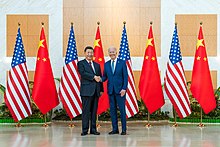
In February 2021, U.S. president Joe Biden said that China is the “most serious competitor” that poses challenges on the “prosperity, security, and democratic values” of the U.S.[33] U.S. secretary of state Antony Blinken stated that previous optimistic approaches to China were flawed, and that China poses “the most significant challenge of any nation-state in the world to the United States”. Blinken also agreed that Biden’s predecessor, Donald Trump, “was right in taking a tougher approach to China”.[9]
In April 2021, the U.S. Senate introduced major legislation in response to China’s growing clout in international affairs. The bill, titled “Strategic Competition Act of 2021”, reflects hardline attitude of both congressional Democrats and Republicans, and sets out to counter the Chinese government’s diplomatic and strategic initiatives.[34] Senate Foreign Relations Committee Chairman Bob Menendez (D-NJ) said, “The Strategic Competition Act of 2021 is a recognition that this moment demands a unified, strategic response that can rebuild American leadership, invest in our ability to out-compete China, and reground diplomacy in our core values”, adding “The United States government must be clear-eyed and sober about Beijing’s intentions and actions, and calibrate our policy and strategy accordingly.”[35]
In May 2021, the Strategic Competition Act of 2021 was consolidated into a larger bill, the United States Innovation and Competition Act (USICA), authorizing US$110 billion for basic and advanced technology research over a five-year period.[36] In June 2021, the USICA passed 68–32 in the Senate with bipartisan support.[37]
Military strategy

The United States’ Indo-Pacific strategy has broadly been to use the surrounding countries around China to blunt its influence. This includes strengthening the bonds between South Korea and Japan[38] as well as trying to get India, another large developing country to help with their efforts.[39] Additionally, with the US withdrawal from the Intermediate-Range Nuclear Forces Treaty with Russia (in part because China wasn’t a party to it), the US has reportedly wanted to find a host in the Asia-Pacific region to point the previously banned weapons at China.[40] In addition to soft power diplomacy within the region, the US is physically surrounding China with military bases in the event of any conflict.[41] The United States has developed many military bases in the Asia Pacific equipped with warships, nuclear missiles and nuclear-capable strategic bombers as a deterrent and to achieve full spectrum dominance in a strategy similar to that of the Cold War.[42]
In October 2023, President Joe Biden asked Congress for 4 billion to counter China in the Indo-Pacific.[43]
Sanctions
The use of economic sanctions has always been a tool of American foreign policy and has become used more frequently in the 21st century, from targeting individuals and sometimes whole countries by using the centrality of the US financial system and the position of the US dollar as the world’s reserve currency to limit trade and cashflow.[44]
Xinjiang

In the area of human rights and international law, the U.S. has worked to put pressure on China internationally by drawing attention to its human rights record. In particular, U.S. policymakers have focused on the status of China’s internment camps for those accused of religious extremism in China’s Xinjiang Autonomous Region, the region inhabited by the Muslim Uyghur minority, as well as the protests in Hong Kong.[45] These camps, which some NGOs such as the Washington-based Victims of Communism Memorial Foundation[46] and East Turkistan National Awakening Movement[47] estimated to have a population of over one million people, have been described as “indoctrination camps” that are reportedly run like prisons to eradicate Uyghur culture and religion in an attempt at Sinicization.[48] The United States Congress has responded to these reports with calls for the imposition of sanctions under the Global Magnitsky Human Rights Accountability Act; in December 2019, the House of Representatives and Senate passed the Uighur Human Rights Policy Act.[49]
Hong Kong
U.S. policy toward Hong Kong had been governed by the United States-Hong Kong Policy Act which said that the U.S. would continue to treat Hong Kong apart from the People’s Republic of China even after the 1997 transfer of sovereignty. This changed drastically in 2020 when the U.S. passed the Hong Kong Autonomy Act and Executive Order 13936 in response to the 2019–2020 Hong Kong protests and imposition of the Hong Kong national security law by the Standing Committee of the National People’s Congress of China. Under EO13936, the U.S. government has no longer treated Hong Kong as separate from China.[50][51]
Economic strategy
With China entering the World Trade Organization in 2001 with approval from the US, China and the world economy benefited from globalization and the access to new markets and the increased trade that resulted. Despite this, some in the United States lament letting China in the WTO because part of the motivation to do so, the political liberalization of the PRC’s government along the lines of the Washington Consensus never materialized. The US hoped economic liberalization would eventually lead to political liberalization to a government more akin to the then recently repatriated Hong Kong Special Administrative Region under “One country, two systems.”[52]
Trans-Pacific Partnership
In part, the Trans-Pacific Partnership (TPP), geopolitically was thought by some to likely bring China’s neighbors closer to the United States and reduce its economic leverage and dependence on Chinese trade.[53][54][55][56][57][58][59] If ratified, the TPP would have strengthened American influence on future rules for the global economy. US Secretary of Defense Ash Carter claimed the passage of the TPP to be as valuable to the United States as the creation of another aircraft carrier.[60] President Barack Obama has argued “if we don’t pass this agreement—if America doesn’t write those rules—then countries like China will”.[61] However, on January 23, 2017, the newly elected President Donald Trump formally withdrew the United States from the Trans-Pacific Partnership.
Trade War

In what would become the China–United States trade war, President Donald Trump began setting tariffs and other trade barriers on China in 2018 with the goal of forcing it to make changes to what the U.S. says are “unfair trade practices”.[62] The US says those trade practices and their effects are the growing trade deficit, the theft of intellectual property and the forced transfer of American technology to China.[63] Jeff Spross, an economics and business correspondent at TheWeek.com, commented that China is pursuing economic development much in the same way as many other modern industrialized economies before it, except in a world where the rules of the global free trade order are enforced by institutions like the World Bank, the International Monetary Fund, and the World Trade Organization, ensuring economic development is driven by private investors.[64]
At the Bretton Woods Conference, the US representative, Harry Dexter White, insisted that the world reserve currency be the United States dollar instead of a proposed new international unit of currency and that the IMF and World Bank be under the purview of the United States.[65] The Reagan administration and US Trade Representative Robert Lighthizer, and Donald Trump as a private citizen, made identical claims in the 1980s when Japan was undergoing its economic miracle which led Japan to signing the Plaza Accord.[66] Like the TPP, it has been argued that the trade war is simply a more direct attempt to stifle China’s development and is indicative of a shift in the US public perception of China as a “rival nation to be contained and beaten” among the two major political parties in Congress, the general public and even the business sector.[67] It has been argued however that employing the Cold War playbook for the seemingly destined-to-fail Soviet Union, a state-run and largely closed economy will not work in the case of China because of its sheer size, growing wealth and vibrant economy.[68] To halt development progress, particularly the Made in China 2025 plan, the US has responded by making it harder for Chinese tech companies from obtaining US technologies by investing in or acquiring US tech companies, and even attempting to stifle specific companies, namely Huawei, ZTE and ByteDance, from doing business domestically and abroad allegedly due to unspecified or speculative national security risks.[69][65] With senior Trump administration officials such as John Bolton, Peter Navarro and Robert Lighthizer demanding any comprehensive trade deal feature “structural changes” which would essentially entail China surrendering its sovereignty over its economic system and planning (its Made in China 2025 industrial plan) and permanently ceding technology leadership to the US-an untenable situation to the Chinese- some see trade tensions continuing long into the future.[65]
In the face of the US tariffs in the trade war and the sanctions on Russia following the annexation of Crimea, China and Russia have cultivated closer economic ties as well as security and defense cooperation to offset the losses.[70][71][72]
Belt and Road Initiative
Another high-profile debate among some people in the United States and China on the international stage is the observation about China’s growing geopolitical footprint in “soft power diplomacy” and international development finance. Particularly, this surrounds China’s Belt and Road Initiative (formerly “One Belt, One Road”), which U.S. officials have labeled as “aggressive” and “debt trap diplomacy“.[73]
Indo-Pacific Economic Framework
The Biden administration and major regional economies such as India and Japan have participated in the Indo-Pacific Economic Framework to varying degrees, which is seen as a way to increase ties between friendly countries economically.[74]
Bilateral relationships
Australia
Starting in 2012, US marines began deploying to Australia on a rotational basis.[75][76] In 2017, Australia rejoined the Quadrilateral Security Dialogue after leaving the strategic grouping in 2008 and in 2021, it became a member of AUKUS.
India
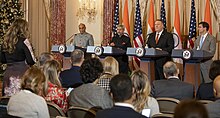
Against the backdrop of the ongoing border dispute between India and the People’s Republic of China, the United States and India signed the Basic Exchange and Cooperation Agreement in October 2020 which enabled greater information-sharing and facilitated defense cooperation.[77] In December 2022, based on BECA, the United States provided real-time location information of the PLA soldiers to help India rout China, during a confrontation in Arunachal Pradesh.[78] As with Australia, Japan and the United States, India is a member of the Quadrilateral Security Dialogue.
India’s relationship with Russia has emerged as an impediment to the US in forming a fully-developed united front with India against China. Policymakers in New Delhi see maintaining ties with Moscow as a way to limit China’s influence over Russia and thwart any coordinated action the two might take against India.[79][80]
Japan
As treaty allies, both Japan and the United States have deepened their security alliance since the late 1990s in response to the rise of China which has emerged as a top geopolitical threat to both countries.[81] In 2018, members of the Amphibious Rapid Deployment Brigade held joint exercises with American marines[82] and in 2023, Japan approved an American plan to station a new marine unit in Okinawa.[83] As with Australia, India and the United States, Japan is a member of the Quadrilateral Security Dialogue.
Philippines
The Philippines and the United States are treaty allies and their security alliance has deepened in light of the ongoing territorial dispute between the Philippines and the People’s Republic of China in the South China Sea. In 2014, both countries signed the Enhanced Defense Cooperation Agreement which allows the United States to rotate troops into the Philippines for extended stays and allows the United States to build and operate facilities on Philippine bases for both American and Philippine forces.
South Korea
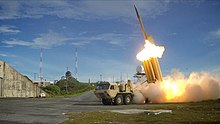
In accordance with the ROK–U.S. Mutual Defense Treaty, the U.S. has maintained a military presence in the South since the end of the Korean War. In late 2016, the United States and South Korea jointly announced the deployment of the Terminal High-Altitude Area Defense (THAAD) in response to nuclear and missile threats by North Korea.[84] South Korea’s decision to host the weapon system on its territory led to a significant deterioration in relations between South Korea and China, which viewed the deployment as a threat to its security.
Taiwan (ROC)

While the United States has had formal relations with the PRC government which was recognized as the sole legitimate representative of China in 1979, it has simultaneously maintained unofficial relations with Taiwan over which, it emphasizes that it does not take any official position regarding sovereignty over Taiwan.[85] The US only “acknowledges” but does not “endorse” PRC’s position over Taiwan,[86][87][88][89] and has considered Taiwan’s political status as “undetermined”.[90]
The position of the United States, as clarified in the China/Taiwan: Evolution of the “One China” Policy report of the Congressional Research Service (date: 9 July 2007) is summed up in five points:
- The United States did not explicitly state the sovereign status of Taiwan in the three US-PRC Joint Communiqués of 1972, 1979, and 1982.
- The United States “acknowledged” the “One China” position of both sides of the Taiwan Strait.
- U.S. policy has not recognized the PRC’s sovereignty over Taiwan;
- U.S. policy has not recognized Taiwan as a sovereign country; and
- U.S. policy has considered Taiwan’s status as unsettled.
These positions remained unchanged in a 2013 report of the Congressional Research Service.[91]
The US has consistently held to its version of One China policy and has stated that in regards to Cross-Strait relations;
We oppose any unilateral changes to the status quo from either side; we do not support Taiwan independence; and we expect cross-Strait differences to be resolved by peaceful means. We continue to have an abiding interest in peace and stability across the Taiwan Strait.[92]
– US Department of State
A cornerstone in the bilateral relationship is the Taiwan Relations Act through which the United States has maintained its policy of strategic ambiguity. Prior to the normalization of diplomatic ties with the PRC, the US was a treaty ally of Taiwan under the Sino-American Mutual Defense Treaty. The treaty essentially prevented the People’s Liberation Army from taking over the island of Taiwan, prolonged and assisted the Republic of China in maintaining legitimacy as the sole government of the whole of mainland China until the early 1970s and also helped US policymakers to shape the policy of containment in East Asia together with South Korea and Japan against the spread of communism.
The recent decade has seen an increasing frequency of US arms sales to Taiwan alongside expanding commercial ties. On December 16, 2015, the Obama administration announced a deal to sell $1.83 billion worth of arms to the Armed Forces of Taiwan, a year and eight months after U.S. Congress passed the Taiwan Relations Act Affirmation and Naval Vessel Transfer Act of 2014 to allow the sale of Oliver Hazard Perry-class frigates to Taiwan. The deal would include the sale of two decommissioned U.S. Navy frigates, anti-tank missiles, Assault Amphibious Vehicles, and FIM-92 Stinger surface-to-air missiles, amid the territorial disputes in the South China Sea.
A new $250 million compound for the American Institute in Taiwan was unveiled in June 2018, accompanied by a “low-key” American delegation. The Chinese authorities denounced this action as violation of the “one China” policy statement and demanded the US to stop all relations with Taiwan without intercession of China. In 2019, the US approved the sale of 108 M1A2 Abrams tanks and 250 Stinger missiles for $2.2 billion and 66 F-16V fighter jets for $8 billion. With the sale, China vowed to sanction any companies involved in the transactions.[93] In May 2020, the U.S. Department of State approved a possible Foreign Military Sales of 18 MK-48 Mod 6 Advanced Technology heavy weight torpedoes for Taiwan in a deal estimated to cost $180 million.[94]
Multilateral relationships
US–Japan–Australia
Then-U.S. secretary of state Condoleezza Rice visited Australia in March 2006 for the “trilateral security forum” with the Japanese foreign minister Taro Aso and his Australian counterpart Alexander Downer.[95][96]
US–Japan–Australia–India (the “Quad”)

In May 2007, the four nations signed a strategic military partnership agreement, the Quadrilateral Security Dialogue. In 2017, with the support of then Japanese Prime Minister Shinzo Abe and Indian Prime Minister Narendra Modi, the United States restarted the “Quad”.
US–Japan–India
The three nations held their first trilateral meeting in December 2011.[97]
Chinese response
The People’s Republic of China officially opposes using the term “competition” to define relations between it and the United States.[98] China’s Xi Jinping claimed “Western countries led by the United States have contained and suppressed us in an all-round way, which has brought unprecedented severe challenges to our development”.[99] In August 2022, U.S. politician Nancy Pelosi, serving as the Speaker of the U.S. House of Representatives, visited Taiwan for the first time in 25 years. China announced plans for live-fire military drills soon after her visit.[100]
In July 2023, at a trilateral forum with Japan and South Korea, China’s chief diplomat Wang Yi said it was important for the two countries to “remember their roots” and work with China “prosper together, revitalize East Asia, revitalize Asia and benefit the world” as “Europeans and Americans can’t distinguish between Chinese, Japanese and South Koreans” and that “no matter how blonde you dye your hair, how sharp you shape your nose, you can never become a European or American, you can never become a Westerner.”[101][102] Wang’s speech was widely criticized as racist, especially by scholars, with some comparing his rhetoric to Imperial Japan‘s 20th century concept of Greater East Asia Co-Prosperity Sphere.[103]
See also
- American geostrategy related
- Free and Open Indo-Pacific
- AirSea Battle
- Blue Team (U.S. politics)
- Geostrategy in Central Asia
- Island chain strategy
- Second Cold War
- Chinese geostrategy related
- Belt and Road Initiative
- Chinese century
- China’s peaceful rise
- List of disputed territories of China
- String of Pearls (Indian Ocean)
- Bilateral and multilateral relations
- Quadrilateral Security Dialogue
- Post–Cold War era
- Malabar (naval exercise)
- Australia–United States relations
- China–United States relations
- India–United States relations
- Japan–United States relations
- Philippines–United States relations
References
- ^ “The End of Engagement: Expertise, Domestic Politics, and U.S. China Strategy under Trump” (PDF). Mershon Center. Retrieved 2020-10-17.
- ^ Stephanie Christine Winkler (28 June 2023). “Strategic Competition and US–China Relations: A Conceptual Analysis”. The Chinese Journal of International Politics. 16 (3): 333–356. doi:10.1093/cjip/poad008.
- ^ Lee, Carol E. (November 9, 2010). “Obama: China should prosper but play by rules”. Politico. Retrieved January 31, 2021.
- ^ “Will India join strategic containment of China?”. People’s Daily. 22 January 2013. Archived from the original on 28 January 2013. Retrieved 7 March 2013.
- ^ a b Carpenter, Ted (30 November 2011). “Washington’s Clumsy China Containment Policy”. The National Interest. Archived from the original on 14 September 2013. Retrieved 7 March 2013.
- ^ Jinan, Wu (25 January 2013). “Containment of China Is Abe’s Top Target”. China-United States Exchange Foundation. Archived from the original on 29 January 2013. Retrieved 7 March 2013.
- ^ a b Timothy, R. Heath (2021). “U.S. Strategic Competition with China: A RAND Research Primer”. RAND Corporation. Retrieved 9 June 2021.
- ^ Ming-Te, Hung; Tai-Ting, Tony Liu (2011). “Sino.U.S. Strategic Competition in Southeast Asia: China’s Rise and U.S. Foreign Policy” (PDF). Political Perspectives. Retrieved 9 May 2017.
- ^ a b Mauldin, William; Gordon, Michael R. (January 20, 2021). “Blinken Backs Tough Approach to China, Says Will Work With GOP”. The Wall Street Journal. Retrieved January 28, 2021.
- ^ “China Remains Top Threat in New US National Defense Strategy”. VOA. 27 October 2022. Retrieved 2023-03-16.
- ^ “CNN.com – Transcripts”. transcripts.cnn.com. Retrieved 9 November 2021.
- ^ Frum, David (2000). How We Got Here: The ’70s. New York, New York: Basic Books. p. 43. ISBN 978-0-465-04195-4.
- ^ Evelyn Goh, and Rosemary Foot, From containment to containment? Understanding US relations with China since 1949 ( Blackwell, 2003).
- ^ a b “Timeline: U.S. Relations With China 1949–2020”. Council on Foreign Relations. Retrieved January 31, 2021.
- ^ “Quadrennial Defense Review Report” (PDF). United States Department of Defense. February 6, 2006. Retrieved 31 January 2021.
- ^ “The National Security Strategy 2006”. The White House. September 1, 2006. Retrieved January 31, 2021.
- ^ Blumenthal, Daniel (15 April 2011). “Riding a tiger: China’s resurging foreign policy aggression”. Foreign Policy. Retrieved January 31, 2021.
- ^ “Japan protest over China ship’s radar action”. BBC News. 5 February 2013. Archived from the original on 10 February 2013. Retrieved 7 March 2013.
- ^ “China and Vietnam in row over detention of fishermen”. BBC News. 22 March 2013. Archived from the original on 24 March 2012. Retrieved 7 March 2013.
- ^ Page, Jeremy (3 December 2012). “Vietnam Accuses Chinese Ships”. The Wall Street Journal. Archived from the original on 13 January 2015. Retrieved 7 March 2013.
- ^ Higgins, Andrew (10 June 2012). “In Philippines, banana growers feel effect of South China Sea dispute”. The Washington Post. Archived from the original on 12 April 2013. Retrieved 7 March 2013.
- ^ a b Skidmore, David (July 23, 2019). “The US Scare Campaign Against China”. The Diplomat. Archived from the original on October 14, 2019. Retrieved January 19, 2020.
- ^ a b Carden, James (August 5, 2019). “Steve Bannon’s Foreign Policy Crusade Against China”. The Nation. Archived from the original on December 5, 2019. Retrieved January 19, 2020.
- ^ a b Musgrave, Paul (May 2, 2019). “The Slip That Revealed the Real Trump Doctrine”. Foreign Policy. Archived from the original on August 7, 2019. Retrieved September 1, 2019.
- ^ a b c Sanger, David E. (August 2, 2019). “State Dept. Officials Force Out Top Policy Planner and Adviser to Mike Pompeo”. The New York Times. Archived from the original on August 28, 2019. Retrieved September 1, 2019.
- ^ Albert, Eleanor (July 19, 2019). “The US-China Relationship: Why Words Matter”. The Diplomat. Archived from the original on July 19, 2019. Retrieved January 19, 2020.
- ^ Fravel, M. Taylor; Roy, J. Stapleton; Swaine, Michael D.; Thornton, Susan A.; Vogel, Ezra (July 2, 2019). “China is not an enemy”. The Washington Post. Retrieved February 1, 2021.
- ^ Griffiths, James (December 4, 2019). “A challenge from China could be just the thing to pull NATO together”. CNN. Archived from the original on December 24, 2019. Retrieved January 19, 2020.
- ^ Holly Ellyatt and David Reid (December 3, 2019). “China’s military might has now become a top issue for NATO”. CNBC. Archived from the original on January 1, 2020. Retrieved January 19, 2020.
- ^ “United States Strategic Approach to The People”. U.S. Department of Defense. May 20, 2020. Retrieved February 5, 2021.
- ^ “United States Strategic Approach to the People’s Republic of China”. The White House. May 26, 2020. Retrieved February 5, 2021.
- ^ “United States Strategic Approach to the People’s Republic of China” (PDF). The White House. May 20, 2020. Retrieved 5 February 2021.
- ^ “Remarks by President Biden on America’s Place in the World”. The White House. February 4, 2021. Retrieved February 6, 2021.
- ^ Zengerle, Patricia; Brunnstrom, David (April 8, 2021). “Details of sweeping effort to counter China emerge in U.S. Senate”. Reuters. Retrieved April 13, 2021.
- ^ “Chairman Menendez Announces Bipartisan Comprehensive China Legislation | United States Senate Committee on Foreign Relations”. United States Senate Committee on Foreign Relations. 8 April 2021. Retrieved 13 April 2021.
- ^ Rattigan, Kathryn M. (April 15, 2021). “The Endless Frontier Act: Shifting the Focus from Defense to Offense”. National Law Review, Volume XI, Number 105. Archived from the original on 13 May 2021. Retrieved 13 May 2021.
- ^ Basu, Zachary (June 8, 2021). “Senate passes sweeping China competition bill in rare bipartisan vote”. Axios. Archived from the original on June 8, 2021. Retrieved June 8, 2021.
- ^ Mehta, Aaron (August 15, 2019). “Tension between South Korea and Japan could hurt US goals in the Pacific—and China is watching”. DefenseNews. Retrieved September 1, 2019.[permanent dead link]
- ^ Zhou, Laura (June 5, 2018). “Indian leader Modi wants no part of China-US rivalry, but still manages to keep Beijing happy”. South China Morning Post. Archived from the original on August 25, 2019. Retrieved September 1, 2019.
- ^ Peck, Michael (August 18, 2019). “100 Billion Reasons Why: Why Australia Said No to American Missiles Aimed At China”. The National Interest. Archived from the original on August 21, 2020. Retrieved September 1, 2019.
- ^ Reed, John (August 20, 2013). “Surrounded: How the U.S. Is Encircling China with Military Bases”. Foreign Policy. Archived from the original on April 1, 2020. Retrieved November 6, 2019.
- ^ Reed, John (August 20, 2013). “Surrounded: How the U.S. Is Encircling China with Military Bases”. Foreign Policy. Archived from the original on April 1, 2020. Retrieved January 1, 2020.
- ^ “Biden asks Congress for $106 billion for Ukraine, Israel, U.S. border”. Axios. Oct 20, 2023.
- ^ Gilsinan, Kathy (May 3, 2019). “A Boom Time for U.S. Sanctions”. The Atlantic. Archived from the original on October 7, 2019. Retrieved January 1, 2020.
- ^ Wong, Edward (December 27, 2019). “Congress Wants to Force Trump’s Hand on Human Rights in China and Beyond”. The New York Times. Archived from the original on January 5, 2020. Retrieved January 5, 2020.
- ^ Zenz, Adrian (July 2019). “Brainwashing, Police Guards and Coercive Internment: Evidence from Chinese Government Documents about the Nature and Extent of Xinjiang’s “Vocational Training Internment Camps”“. Journal of Political Risk. 7 (7). Archived from the original on 3 August 2019. Retrieved 1 July 2019.
- ^ “China running more camps in Xinjiang than thought: group”. Taipei Times. 14 November 2019. Archived from the original on 21 November 2019. Retrieved 19 November 2019.
Uighur activists on Tuesday said that they have documented nearly 500 camps and prisons run by China to detain members of the ethnic group, alleging that Beijing could be holding far more than the commonly cited figure of 1 million people. The Washington-based East Turkistan National Awakening Movement, a group that seeks independence for the Xinjiang region, gave the geographic coordinates of 182 suspected “concentration camps” where Uighurs are allegedly pressured to renounce their culture.
- ^ “China defends its Xinjiang ‘re-education’ camps”. December 9, 2019. Archived from the original on December 18, 2019. Retrieved January 5, 2020.
- ^ Flatley, Daniel (December 3, 2019). “U.S. House Passes Xinjiang Bill, Prompting Threat From China”. Bloomberg. Archived from the original on December 4, 2019. Retrieved January 5, 2020.
- ^ “Executive Order Eliminates Differential Treatment for Hong Kong” (PDF). Cleary Gottlieb Steen & Hamilton LLP. July 21, 2020. Archived (PDF) from the original on September 30, 2020.
- ^ “Trump ends preferential economic treatment for Hong Kong”. BBC.
- ^ Pethokoukis, James (September 5, 2019). “What if the global economy had stayed closed to China?”. American Enterprise Institute. Archived from the original on October 8, 2019. Retrieved November 6, 2019.
- ^ “What Will the TPP Mean for China?”. Foreign Policy. 7 October 2015. Archived from the original on 2 June 2016. Retrieved 24 May 2016.
- ^ Perlez, Jane (6 October 2015). “U.S. Allies See Trans-Pacific Partnership as a Check on China”. The New York Times. ISSN 0362-4331. Archived from the original on 12 October 2015. Retrieved 24 May 2016.
- ^ “Trade Is a National Security Imperative – Harvard – Belfer Center for Science and International Affairs”. belfercenter.hks.harvard.edu. Archived from the original on 7 August 2016. Retrieved 24 May 2016.
- ^ Boot, Max (2016-04-29). “The Geopolitical Necessity of Trade”. Archived from the original on 2019-06-30.
- ^ Magnusson, Earl Anthony Wayne, Oliver. “The Death of TPP: The Best Thing That Ever Happened to China”. The National Interest. Archived from the original on 2017-02-03. Retrieved 2017-01-31.
{{cite news}}: CS1 maint: multiple names: authors list (link) - ^ “This Isn’t Realpolitik. This Is Amateur Hour”. Foreign Policy. 3 May 2017. Archived from the original on 2017-05-04. Retrieved 2017-05-04.
- ^ “Trump Will Be Haunted by the Ghost of TPP”. Foreign Policy. 6 November 2017. Archived from the original on 2017-11-22. Retrieved 2017-11-22.
- ^ Green, Michael J.; Goodman, Matthew P. (2 October 2015). “After TPP: the Geopolitics of Asia and the Pacific”. The Washington Quarterly. 38 (4): 19–34. doi:10.1080/0163660X.2015.1125827. ISSN 0163-660X. S2CID 155763676.
- ^ Calmes, Jackie (5 November 2015). “Trans-Pacific Partnership Text Released, Waving Green Flag for Debate”. The New York Times. ISSN 0362-4331. Archived from the original on 16 April 2016. Retrieved 24 May 2016.
- ^ Swanson, Ana (July 5, 2018). “Trump’s Trade War With China Is Officially Underway”. The New York Times. Archived from the original on July 20, 2020. Retrieved November 6, 2019.
- ^ “Findings of the Investigation into China’s Acts, Policies, and Practices Related to Technology Transfer, Intellectual Property, and Innovation Under Section 301 of the Trade Act of 1974” (PDF). Office of the United States Trade Representative. March 22, 2018. Archived from the original (PDF) on March 22, 2018. Retrieved November 6, 2019.
- ^ Spross, Jeff (April 12, 2019). “China isn’t cheating at trade. It’s just running America’s old plays”. The Week. Archived from the original on November 5, 2019. Retrieved November 6, 2019.
- ^ a b c “Why the US-China trade war might not end”. 18 February 2019. Archived from the original on 26 January 2020. Retrieved 26 January 2020.
- ^ Griffiths, James (May 24, 2019). “The US won a trade war against Japan. But China is a whole new ball game”. CNN. Archived from the original on October 5, 2019. Retrieved November 6, 2019.
- ^ Yuwen, Deng (July 4, 2018). “The US sees the trade war as a tactic to contain China. So does Beijing”. South China Morning Post. Archived from the original on September 1, 2019. Retrieved September 1, 2019.
- ^ Saetren, Will (September 17, 2018). “US cold war containment strategy against China may not end the Soviet way. Instead, it could explode into armed conflict”. South China Morning Post. Archived from the original on September 14, 2019. Retrieved November 6, 2019.
- ^ Kharpal, Arjun (September 29, 2019). “China’s tech ambition is ‘unstoppable’ — with or without the trade war, analyst says”. CNBC. Archived from the original on October 14, 2019. Retrieved November 6, 2019.
- ^ “US trade war makes Russia an indispensable partner for China”. 2019-05-14. Archived from the original on 2019-12-15. Retrieved 2019-12-15.
- ^ “Sanctions encourage Sino-Russian cooperation”. 2019-12-11. Archived from the original on 2019-12-15. Retrieved 2019-12-15.
- ^ “China and Russia are getting along better than ever, the U.S. Has only made it easier for them”. Newsweek. 2019-08-07. Archived from the original on 2019-12-15. Retrieved 2019-12-15.
- ^ Thomas P. Cavanna (July 2019). “Unlocking the Gates of Eurasia: China’s Belt and Road Initiative and Its Implications for U.S. Grand Strategy”. Texas National Security Review. 2 (3). Archived from the original on 2019-10-06. Retrieved 2019-10-06.
- ^ “Limited Hard Balancing: Explaining India’s Counter Response to Chinese Encirclement”. Air University (AU). Retrieved 2023-04-26.
- ^ “Obama visit: Australia agrees US Marine deployment plan”. BBC.
- ^ “First Marines in Australia as U.S. ramps up Asia-Pacific focus”. Reuters.
- ^ Griffiths, James (27 October 2020). “India signs defensive agreement with US following Himalayan standoff with China”. CNN. Archived from the original on 28 October 2020. Retrieved 27 October 2020.
- ^ “US shared intel with India to repel Chinese troops? White House says…”. Hindustan Times. 2023-03-21. Retrieved 2023-03-22.
- ^ Schuman, Michael (2023-03-01). “What Limits Any U.S. Alliance With India Over China”. The Atlantic. Retrieved 2023-03-01.
- ^ “The Enduring Russian Impediment to U.S.-Indian Relations”. War on the Rocks. 2023-02-13. Retrieved 2023-07-18.
- ^ Miller, Jennifer M. “Let’s Not be Laughed at Anymore: Donald Trump and Japan from the 1980s to the Present”. Journal of American-East Asian Relations. 25 (2): 152.
- ^ “Amid rising tensions with China, Japan just sent armored vehicles to foreign soil for the first time since World War II”. 6 October 2018.
- ^ “U.S. and Japan agree to step up security cooperation amid China worries”. Reuters.
- ^ Sherman, Paul; Haenle, Anne (2016-09-12). “The Real Answer to China’s THAAD Dilemma”. The Diplomat. Retrieved 2022-04-29.
- ^ “US Does Not Take a Position on Taiwan’s Sovereignty, State Department Says”. VOA. 2022-09-26. Retrieved 2023-08-17.
- ^ Steve Chabot (2016-05-17). “Text – H.Con.Res.88 – 114th Congress (2015-2016): Reaffirming the Taiwan Relations Act and the Six Assurances as cornerstones of United States-Taiwan relations”. United States Congress. Archived from the original on 2020-12-17. Retrieved 2019-04-14.
Whereas the Six Assurances are guidelines to conduct relations between the United States and Taiwan and stipulate that the United States would not—……(6) formally recognize Chinese sovereignty over Taiwan.
- ^ Michael J. Green (13 January 2017). “What Is the U.S. “One China” Policy, and Why Does it Matter?”. CSIS. Archived from the original on 23 April 2022. Retrieved 29 April 2022.
{{cite journal}}: Cite journal requires|journal=(help) - ^ “What is the ‘One China’ policy?”. BBC News. 10 February 2017. Archived from the original on 9 January 2019. Retrieved 9 January 2019.
- ^ “China/Taiwan: Evolution of the “One China” Policy—Key Statements from Washington, Beijing, and Taipei” (PDF). Congressional Research Service. 2014-10-10. p. 39. Archived (PDF) from the original on 2017-04-10. Retrieved 2017-03-07.
In the Chinese text, the word for “acknowledge” is “cheng ren” (recognize), a change from “ren shi” (acknowledge),used in the 1972 Shanghai Communique. During debate on the TRA in February 1979, Senator Jacob Javits noted the difference and said that “it is very important that we not subscribe to the Chinese position on One China either way.” Deputy Secretary of State Warren Christopher responded that “we regard the English text as being the binding text. We regard the word ‘acknowledge’ as being the word that is determinative for the U.S.” (Wolff and Simon, pp. 310-311).
- ^ Shirley A. Kan; Wayne M. Morrison (2013-01-04). “U.S.-Taiwan Relationship: Overview of Policy Issues” (PDF). Congressional Research Service. p. 4. Archived (PDF) from the original on 2016-12-11. Retrieved 2017-05-11.
The position of the United States, as clarified in the China/Taiwan: Evolution of the “One China” Policy report of the Congressional Research Service (date: July 9, 2007) is summed up in five points:
1. The United States did not explicitly state the sovereign status of Taiwan in the three US-PRC Joint Communiques of 1972, 1979, and 1982.
2. The United States “acknowledged” the “One China” position of both sides of the Taiwan Strait.
3. U.S. policy has not recognized the PRC’s sovereignty over Taiwan;
4. U.S. policy has not recognized Taiwan as a sovereign country; and
5. U.S. policy has considered Taiwan’s status as undetermined. U.S. policy has considered Taiwan’s status as unsettled.
These positions remained unchanged in a 2013 report of the Congressional Research Service. - ^ Shirley A. Kan; Wayne M. Morrison (4 January 2013). “U.S.-Taiwan Relationship: Overview of Policy Issues” (PDF). Congressional Research Service. p. 4. Archived (PDF) from the original on 31 December 2017. Retrieved 25 June 2017.
- ^ “U.S. Relations With Taiwan”. United States Department of State. Retrieved 2023-08-17.
- ^ Thrall, A. Trevor (September 17, 2019). “Selling F-16s to Taiwan Is Bad Business”. Defense One. Archived from the original on August 21, 2020. Retrieved November 6, 2019.
- ^ Defense Security Cooperation Agency. “Taipei Economic and Cultural Representative Office in the United States (tecro) – MK 48 Mod 6 Advanced Technology (at) Heavy Weight Torpedo (HWT)”. DSCA. Archived from the original on 23 September 2020. Retrieved 22 September 2020.
- ^ Jain, Purnendra (March 18, 2006). “A ‘little NATO’ against China” Archived 2006-03-18 at the Wayback Machine. Asia Times Online.
- ^ Weisman, Steven (March 17, 2006). “Rice and Australian Counterpart Differ About China” Archived 2014-09-03 at the Wayback Machine. The New York Times.
- ^ “Inside the first ever U.S.-Japan-India trilateral meeting”. 23 December 2011. Archived from the original on 7 July 2018. Retrieved 7 July 2018.
- ^ “China opposes using competition to define China-US relations”. People’s Daily. Retrieved 30 Jan 2023.
- ^ He, Laura (2023-03-07). “Xi Jinping hits out at US as he urges China’s private firms to ‘fight’ alongside Communist Party | CNN Business”. CNN. Retrieved 2023-03-16.
- ^ “Taiwan: Nancy Pelosi meets President Tsai to Beijing’s fury”. BBC News. 2022-08-02. Retrieved 2023-07-18.
- ^ “Remember your ‘roots’, China tells neighbours”. Bangkok Post. 2023-07-04. Retrieved July 4, 2023.
- ^ Gan, Nectar (2023-07-04). “‘You can never become a Westerner:’ China’s top diplomat urges Japan and South Korea to align with Beijing and ‘revitalize Asia’“. CNN. Retrieved July 4, 2023.
- ^ “China dismisses criticism of top diplomat’s comments appearing to push for race-based alliance”. Associated Press. 5 July 2023. Retrieved 6 July 2023.
Further reading
- Buzan, Barry and Evelyn Goh, eds. Rethinking Sino-Japanese Alienation: History Problems and Historical Opportunities (2020)
- Goh, Evelyn, and Rosemary Foot. From containment to containment? Understanding US relations with China since 1949 (Blackwell, 2003).
- Goh, Evelyn, and Sheldon W. Simon, eds. China, the United States, and South-East Asia: Contending Perspectives on Politics, Security, and Economics (2007)
- Green, Michael J. By more than providence: Grand strategy and American power in the Asia Pacific since 1783 (Columbia UP, 2017).
- Sahashi, Ryo. “Japan’s strategy amid US–China confrontation.” China International Strategy Review 2.2 (2020): 232–245.


